Singapore Contemporary Architecture Guide
Explore the incredible architecture of this young (and rich) city-state in Southeast Asia.
I visited Singapore in 2018. Most of my time was spent running from building to building, checking all the crazy/weird/great/mind-blowing architecture in the city. In one week, I savored delicious food, slept in two buildings from WOHA and in one from Safdie, walked dozens of kilometers all over town, and visited some of the most exciting architecture in Singapore.
Architecture in Singapore is plentiful and varied. In one week, I could only have a taste of it. There is so much to see. Take this list as a simple and small curated list of what I consider the coolest, most daring, most audacious architecture in town.
Background
The city estate of Singapore, located on the southern tip of Malaysia, is a peculiar country. It is an island (plus 62 other islets), located on the southernmost tip of the Malay Peninsula (you basically cross a bridge and are in Malaysia). It started as a British colonial outpost in the early 1800s, suffered turbulent years during World War II, and gained independence in the 1960s:
In 1819, Sir Stamford Raffles founded colonial Singapore as a trading post of the British East India Company. After the company's collapse in 1858, the islands were ceded to the British Raj as a crown colony. During the Second World War, Singapore was occupied by Japan. It gained independence from the British Empire in 1963 by joining Malaysia along with other former British territories (Sabah and Sarawak). However, it separated two years later over ideological differences, becoming a sovereign state in 1965. After early years of turbulence and despite lacking natural resources and a hinterland, the nation developed rapidly as an Asian Tiger economy, based on external trade and its workforce.
Its rapid development within the last 60 years turned it from a developing country into a global hub full of superlatives:
The city ranks highly in numerous international rankings, and has been recognised as the most "technology-ready" nation (WEF), top International-meetings city (UIA), city with "best investment potential" (BERI), world's smartest city, world's safest country, world's most competitive economy, recently over-taking United States and Hong Kong. third least-corrupt country, third-largest foreign exchange market, third-largest financial center, third-largest oil refining, and trading center, fifth-most innovative country, and the second-busiest container port.
However, this development is laden with controversy, with accusations of exploration of the low-income workforce and immigrant labor. It is a pattern from many countries where "development at all costs" is practiced. The well-off part of the population thrives, and what tourists see are shiny highrises and a well-kept urban environment. But we should always take it all with a pinch of salt.

Map
The map below shows the buildings mentioned in this article in black and other interesting buildings in gray. I also included some other goodies in it (food and hotels!):
Buildings
- Jewel Changi Airport - Moshe Safdie
- Marina Bay Sands / Moshe Safdie
- Art Science Museum / Moshe Safdie
- Helix Bridge / COX, architects61, Arup
- Gardens By The Bay / Wilkinson Eyre & Grant Associates
- Esplanade / DP Architects
- South Beach Tower / Foster + Partners
- DUO - Büro Ole Scheeren
- Gateway Towers - I.M. Pei
- National Gallery - Studio Milou Singapore
- PARKROYAL on Pickering - WOHA
- Oasia Hotel Downtown - WOHA
- National Design Centre / SCDA Architects
- The Star Vista / Aedas
- The Hive NTU / Heatherwick
- Sky Habitat / Moshe Safdie
- The Interlace / OMA
- More tips & links...
Jewel Changi Airport - Moshe Safdie
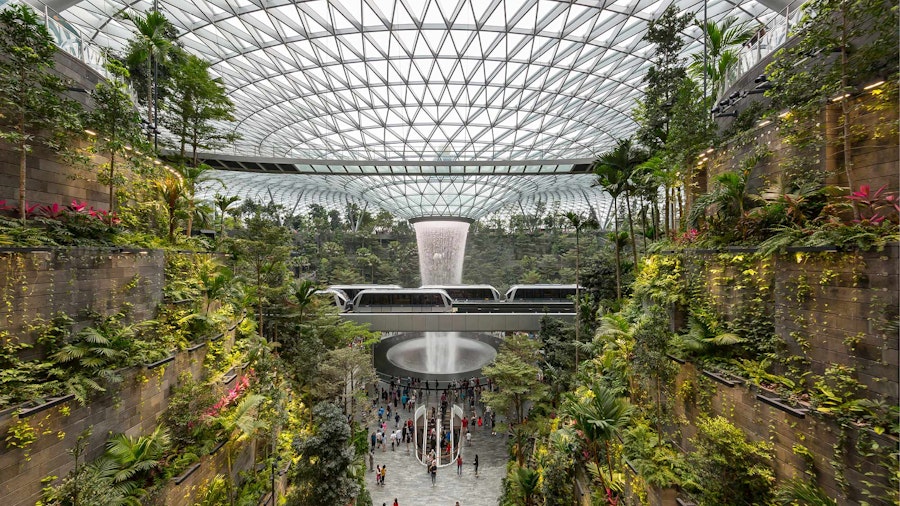
I missed this one when I went, as it was under construction. But you probably saw it all over the news back in April: a fantastic waterfall in the middle of a lush greenhouse in the middle of the airport. The added monorail lines on the pictures made it look like a space colony from the future. This building is a great introduction to the contemporary architecture of Singapore and to the buildings from Safdie, as the city is one of his most prolific territories.
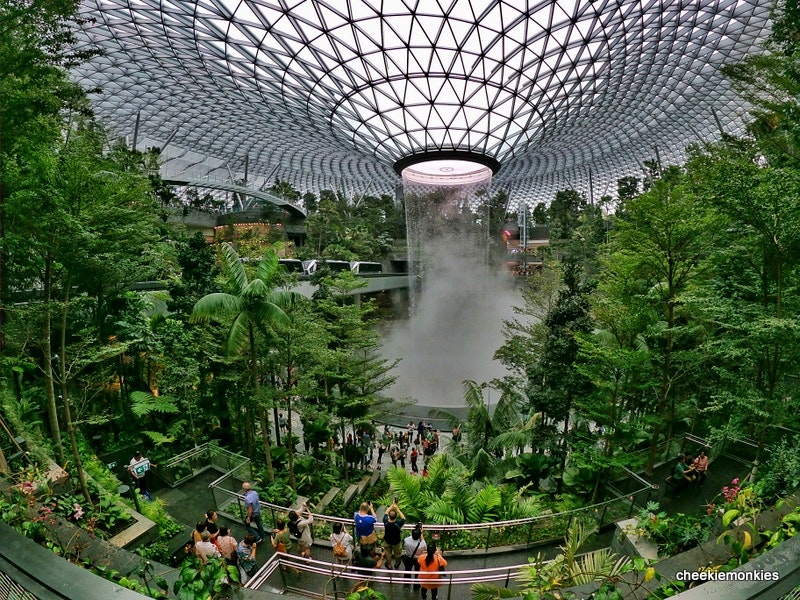
With the lovely name of Rain Vortex, the waterfall is enormous: 40m above ground, dropping from the middle of the donut-shaped glass ceiling. It is the largest indoor waterfall in the world.
Under the glass roof, the Shiseido Forest Valley is surrounded by shops and other airport facilities. There, you can either go on a shopping spree or take a stroll. There are trails and other waterfalls that lead you all the way up the Canopy Park, where you can get lost in a hedge maze or walk on a net hung above the trees.
It sounds like an excellent pastime for long layovers. You connect with nature, let go of the traveling stress and prepare for your next journey.
Visit
Well, it's your arrival point, unless you come crossing by land from the Malaysian border. The waterfall and surrounding forest are open to the public, connected to the public MRT station coming from the city. So even if you are not flying in or out, you can still pop in for a visit.
Jewel Changi Airport
- 2019
- Airport, commercial
- 22,000sqm
- Jewel Changi AirportWikipedia
- Safdie's project page
- Inside Safdie Architects’ $1.3 Billion Jewel Changi Airport ComplexFast Company
- Moshe Safdie Designs Singapore's Jewel Changi Airport As a Destination GardenAD
- Moshe Safdie On Jewel Changi Airport, Singapore’s Latest Architectural WonderINDESIGNLIVE.sg
- Safdie Architects completes world's tallest indoor waterfall at Jewel Changi AirportDezeen
Marina Bay Sands / Moshe Safdie
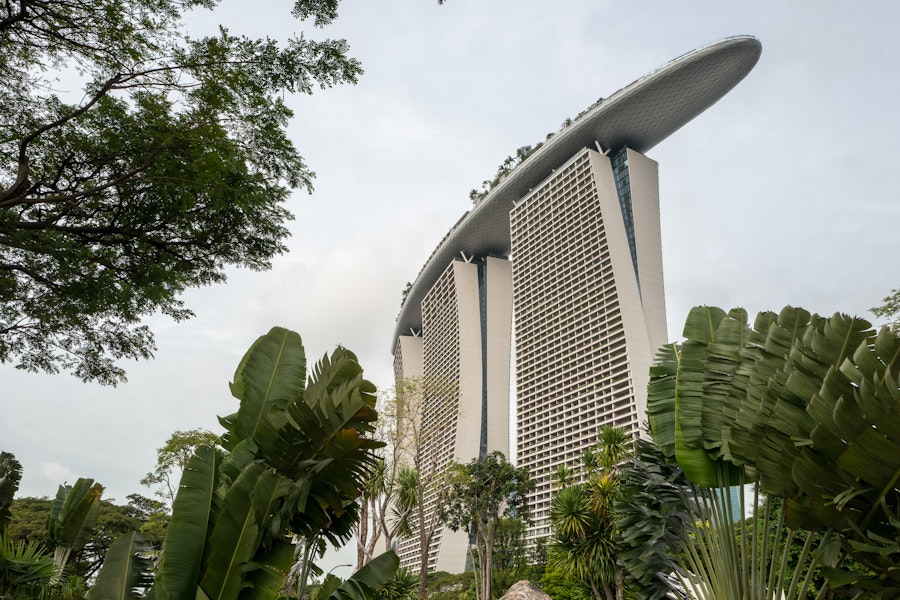
"(...) then we had the dilemma of where are we going to put the swimming pool? How do we make this a resort? That's when the idea of the Sky Park was born. It's on the 57th floor, it's 2.5 acres cantilevering 65 meters off the tower with all these gardens, and it's proven to be magical. It's really put us on the map in Asia; that's for sure."
Moshe Safdie
We need to start with this one. And of course, I had to stay at least one night in it, just to take a dip into its rooftop pool.
This is the mother "arcology" in Singapore. It is a hard-to-believe building. When you approach it coming from the airport, the first striking feature that hits you is the rooftop, shaped like a boat and cantilevering over 65 meters to the north. Then, the towers come into view: six towers leaning on each other, slightly opening at the base, supporting the rooftop ship above. It all slants and rests on yet another vast plinth building set to the side facing the bay, housing a giant shopping mall, the Shoppes.
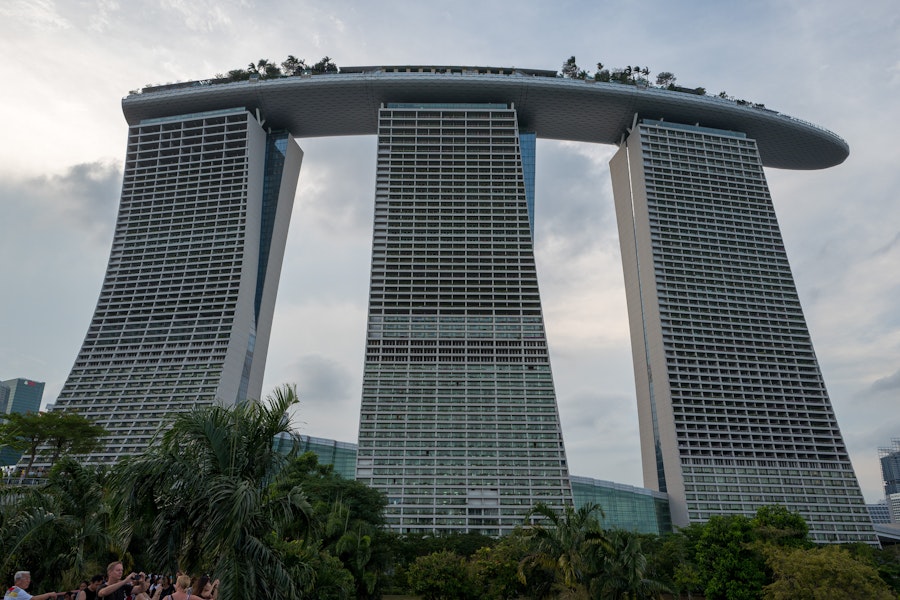
It is impressive from far away, but I found approaching it hard, unwelcoming. The taxi dropped me off on a side entrance, where two towers spread apart, and you enter the space in between. It was vast and impressive and left me speechless. As I checked in and got to my room, I realized how crazy this lobby is: entirely public, connecting hotel with a casino with shopping with gardens, through bridges and elevators and walkways, all in between six skyscrapers. Just mind-blowing.
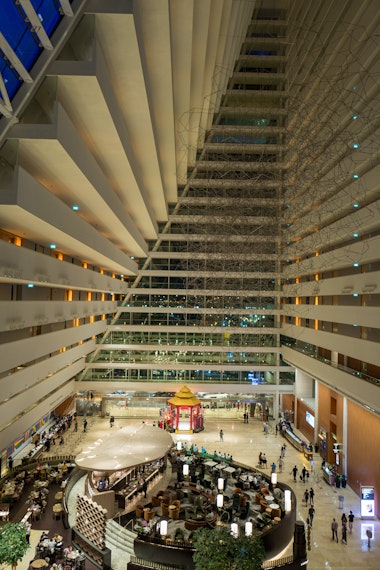
The room was quite standard, if not a bit on the old-school side. The view was beautiful, but nothing compared to the rooftop, which has the main reason to stay in the hotel: the pool. Anyone can go up, and I recommend you do it even if you are not staying in the hotel. You won't be allowed in the pool, but the view is still great. As soon as you walk out the elevator, the Gardens By The Bay extend at your feet all the way to the sea. To the other side, the Marina Bay and the highrises of Singapore's CBD stand tall, looming. There is also a public viewing platform on the cantilever of the rooftop, but I have not checked it out.
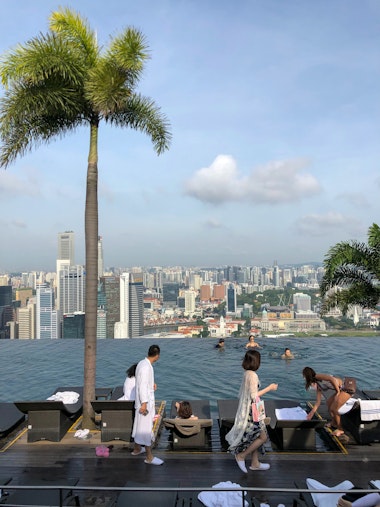
The pool is nice. I went at night and hung out there for an hour or so watching the sunset on the Marina Bay and CBD. The crowds made it far from relaxing; it felt more like a chore I had to check from my list before moving on.
Downstairs, the Shoppes is an endless shopping mall with some good restaurants. You can also ride a gondola on some indoor canals if you fancy (Las Vegas Sands, the operator, also owns the Venetian in Macau, so you can see the influence...). Skip all that, stay on the pool upstairs, or head out to the Marina or Gardens By The Bay. The Marina Bay Sands is a building best enjoyed from far away. Or on top of it.
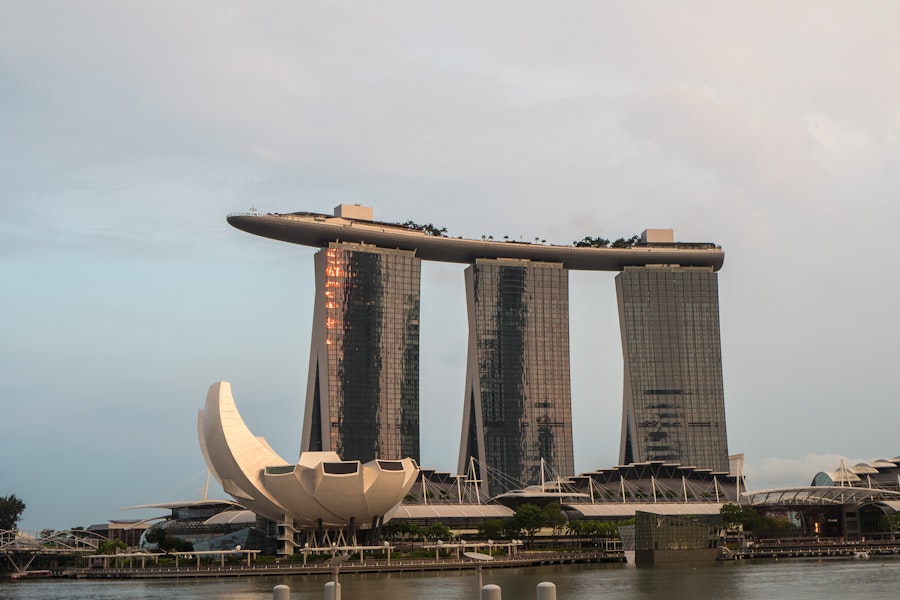
Visit
As I described, you can walk and explore most of the buildings without barriers. The elevators work with key-cards, but there are just so many people that you can easily catch a ride in an elevator full of guests. Just go there and explore as much as you want. If you fancy staying in the hotel, I would recommend saving money on the room price by getting the ones with worse views, as the view is better on the rooftop anyway.
If three are not enough...
Safdie recently announced a fourth tower for the complex. It will be a standalone hotel with over 1000 rooms (complete with its own sky roof and pool), plus a massive arena for over 15000 people next to it. Now, that's what I call a good client.
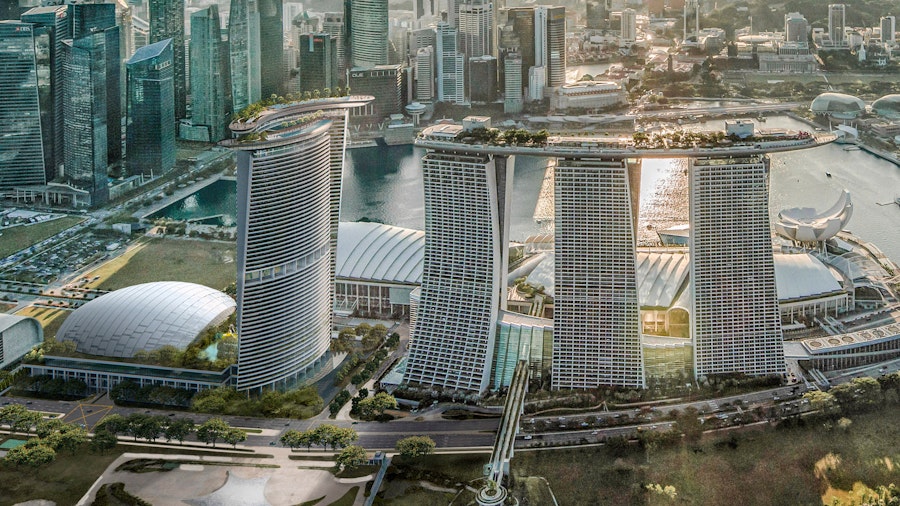
Art Science Museum / Moshe Safdie
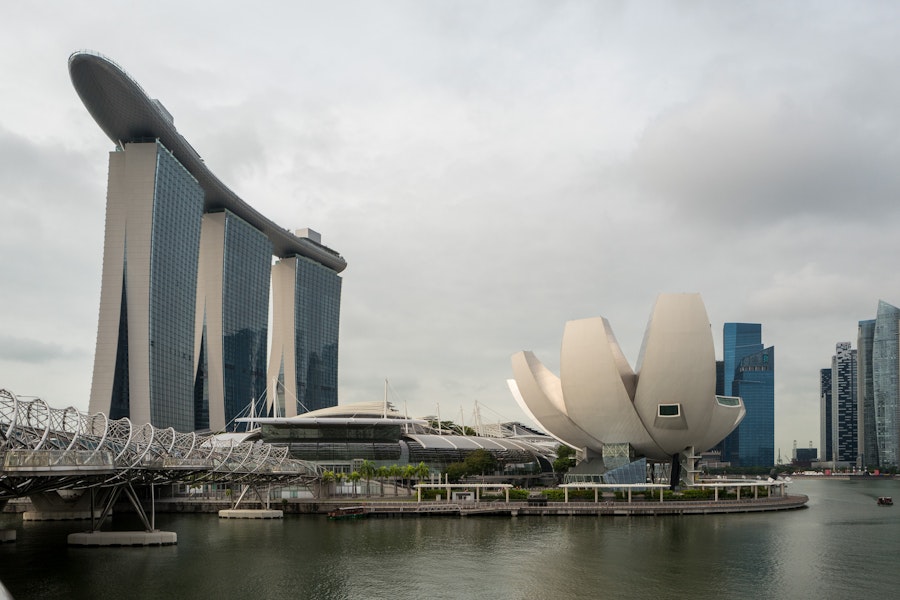
Like a lotus flower floating on the bay, the ten "petals" of the Art Science Museum shoot to the air from a transparent base. A circular structure holds them so that rainwater is drained through a central oculus into an interior waterfall (Safdie just loves waterfalls...).
Inside, three levels with 21 galleries house temporary exhibitions dedicated to the dynamic interplay between art and science. Most impressive are the top galleries, where the tips of the petals end in skylights, and their curvature and scale are very pronounced. Those are lovely spaces with fascinating light quality.
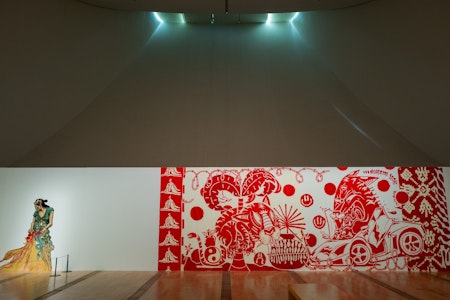
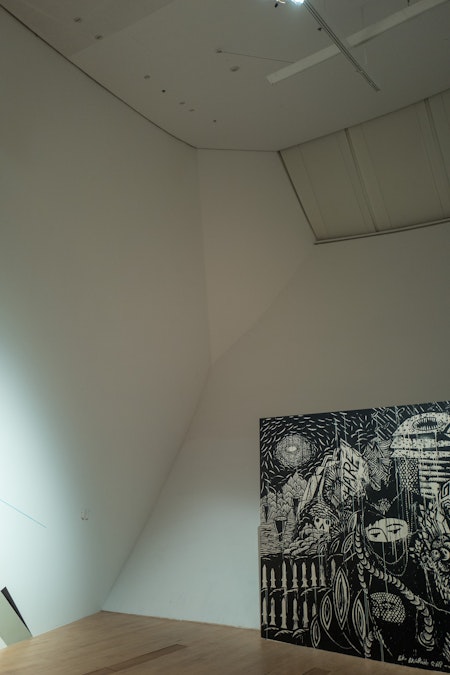
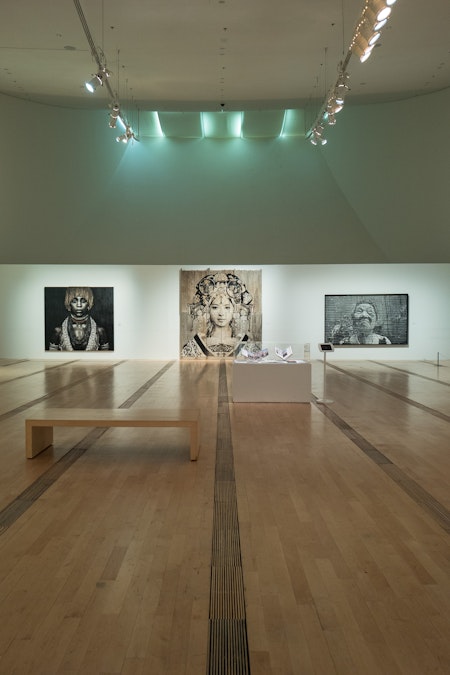
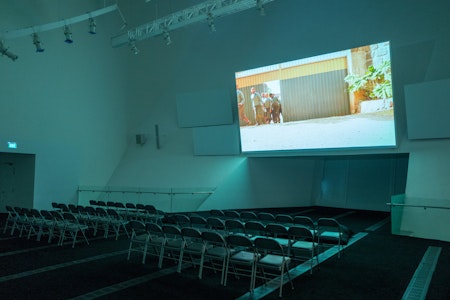
Also called "the welcoming hand of Singapore," It reminds me of modernist architecture in Brazil, especially Niemeyer's, in Brasilia. I was quite surprised to learn this was not a white concrete building but a complex structure clad in double-curved fiber-reinforced polymer panels. This gives it a seamless appearance and makes it much more performative than Niemeyer's concrete sculpt... ops, buildings.
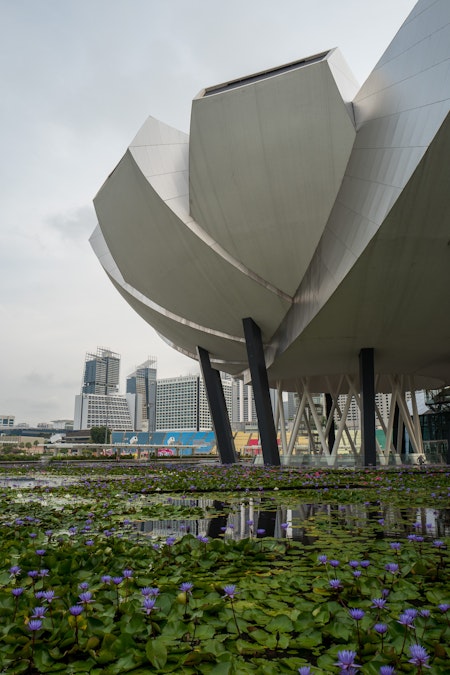
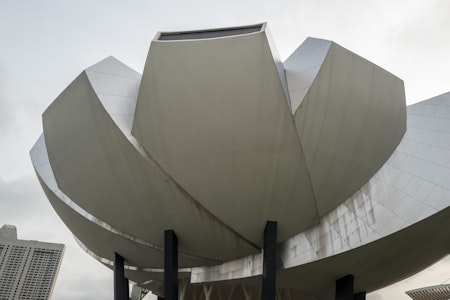
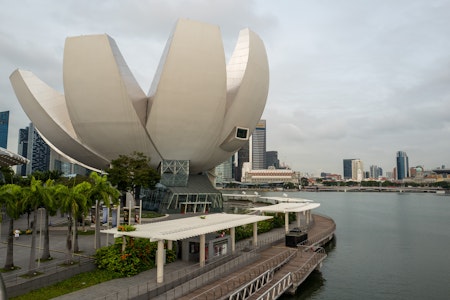
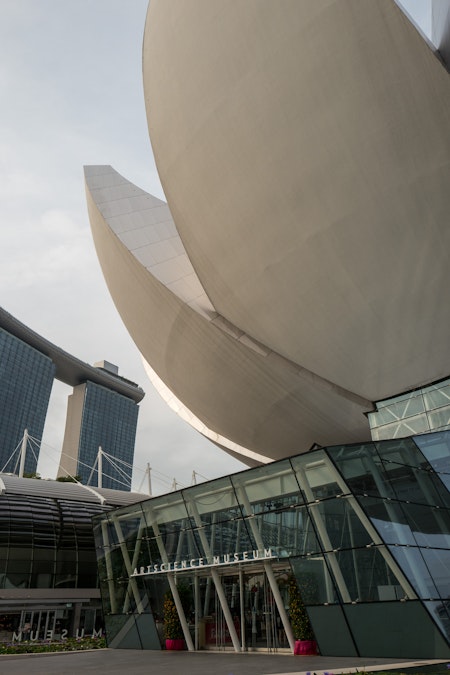
Visit
Check the opening times, get a ticket, and explore. Watch out for the top-floor galleries and the waterfall at its center.
Art Science Museum
- 2011
- Cultural
- 6,000sqm
- Artscience Museum In Singapore / Safdie ArchitectsArchDaily
- ArtScience MuseumWikipedia
Helix Bridge / COX, architects61, Arup
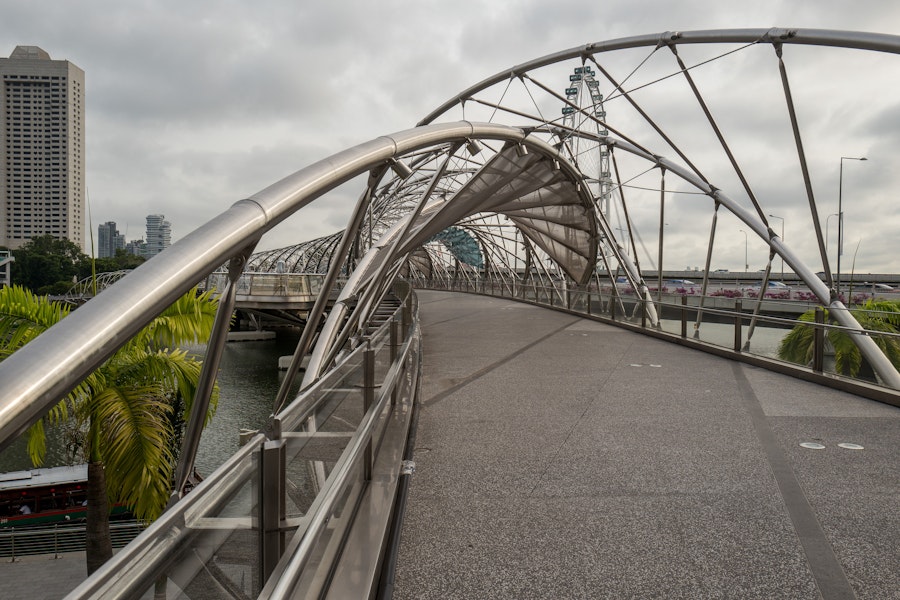
Right next to the Art Science Museum, you'll see a cool-looking bridge: the Helix Bridge, by COX Architecture. As you exit the museum or the Shoppes, you can walk through it to reach the other side and explore the north part of Marina Bay.
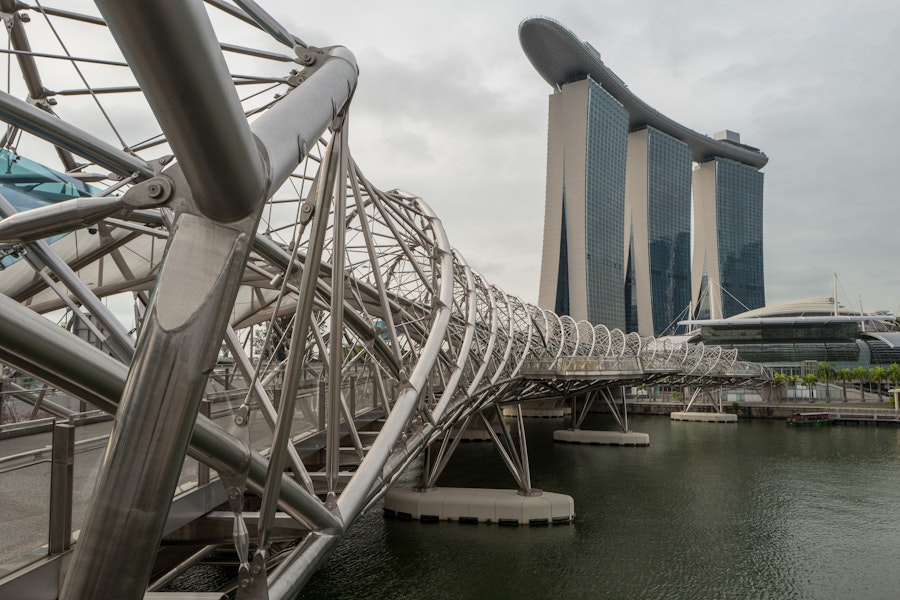
The bridge is a perfect combination of concept, design, and structure. The double-helix curved structure allows for efficient structural design while creating a soft, arc-shaped connection between both sides of the Marina. The four rest stops along the 280m structure create viewing platforms with great views to the CBD, the Marina Bay Sands complex, and the Esplanade. And the illumination at night is a destination on itself.
Visit
It is an important connection closing off the loop around Marina Bay, so you'll find many opportunities to cross it. If possible, come at night or just before sunset.
Helix Bridge
- 2010
- Pedestrian bridge
- Helix BridgeWikipedia
- Helix Bridge / Cox Architecture with Architects 61ArchDaily
- COX's project page
Gardens By The Bay / Wilkinson Eyre & Grant Associates
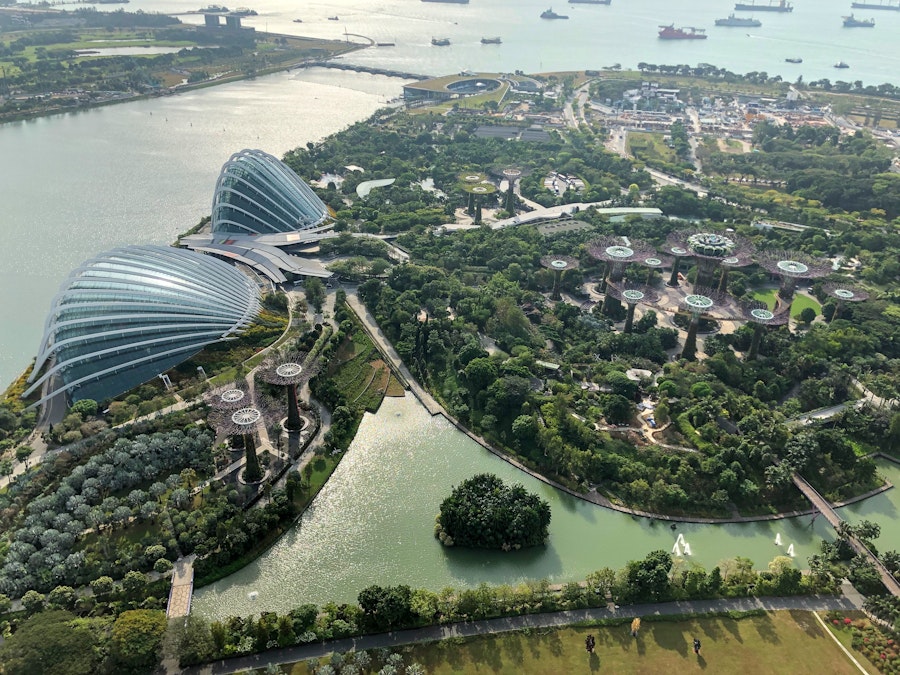
East of the Marina Bay Sands, you'll find another fantastic mega-development: the Gardens By The Bay. It is part of Singapore's government vision to transform the city-state into a city-in-a-garden. Developed in a partnership between British architecture firm Wilkinson Eyre and landscape architecture company Grant Associates, the master plan contains numerous gardens, the iconic supertrees, and two large greenhouses - the Flower Dome and the Cloud Forest.
You can easily spend a whole afternoon in the gardens. I would start at the greenhouses, followed by a stroll throughout the parks. By sunset, you can walk over to the Supertree Grove to watch the nightly light show.
The greenhouses are what impressed me the most. The Flower Dome impresses first by the expanse of its roof. Then comes the crisp, chill pleasant air. Showcasing specimens from the cool-dry Mediterranean zone, it has a gigantic collection of cacti, flowers, and other plants, etc. It is also beautiful and extremely pleasant to spend time in.
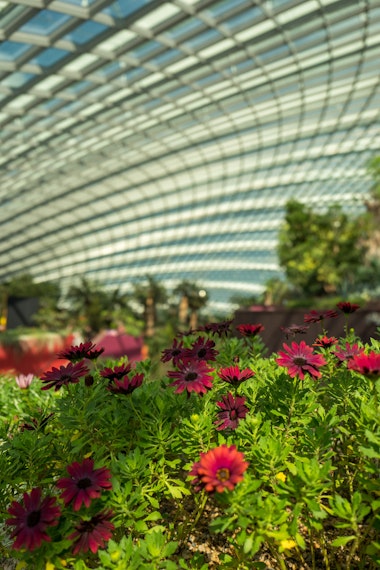
The Cloud Forest (cool-wet tropical zones) welcomes you with a blast of cool air and humidity from a surprising huge waterfall right at the entrance. By taking an elevator, you are quickly transported to the top, at the canopy level, and can walk your way down through trees, waterfalls, and caves. It is so much fun and so well done. The plants are beautiful, the air is fresh, and I've never seen so many different types of orchids in my life.
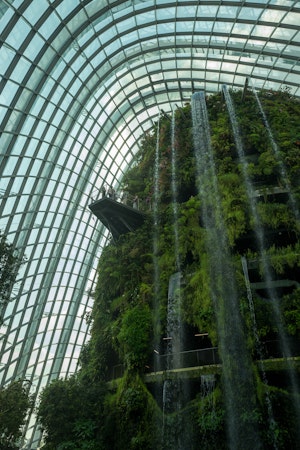
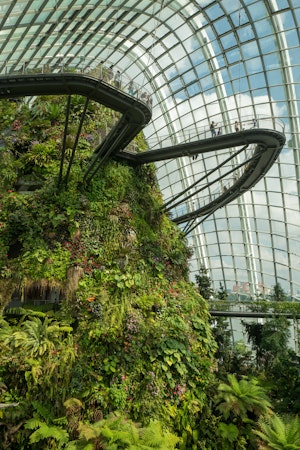
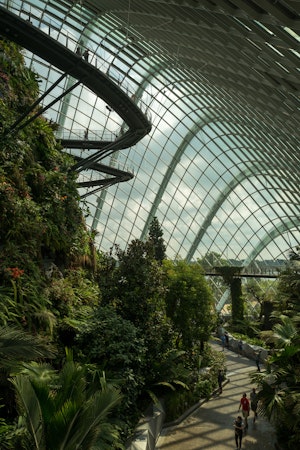
The Supertree Grove is also quite impressive. There are 18 tree-like mega-structures, more than 50m in height, loaded with plants and interconnected with sky bridges. It is quite a sight, unlike anything I've ever seen. Make sure to go up to walk along the sky-bridges. If possible, stay for the night show. Lying down on the circular grass field watching the light show with the gigantic Marina Bay Sands in the background is a fun experience.
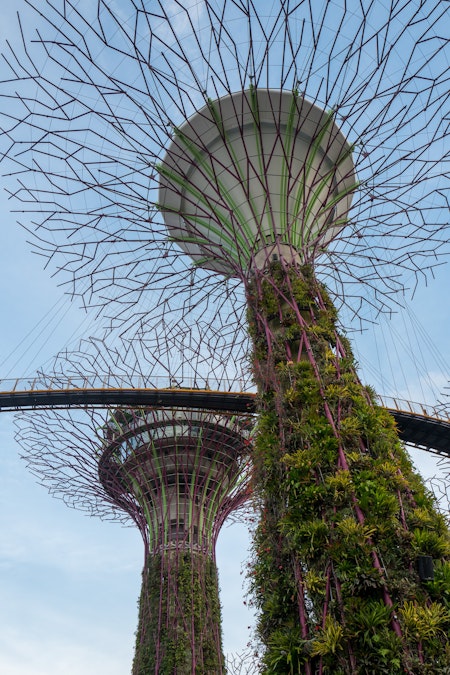
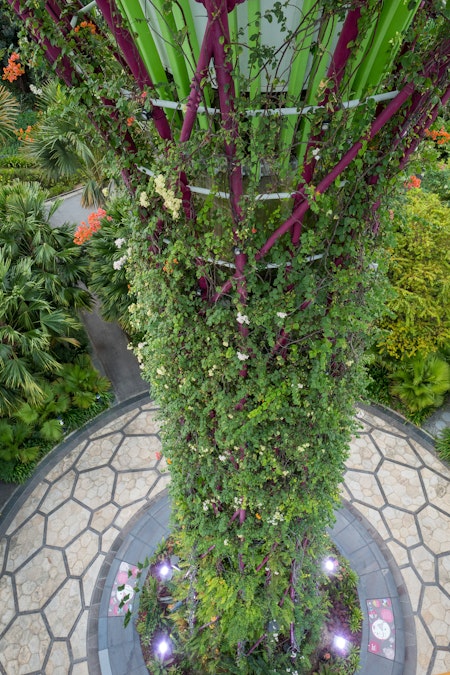
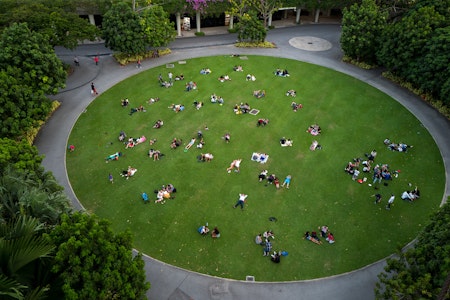
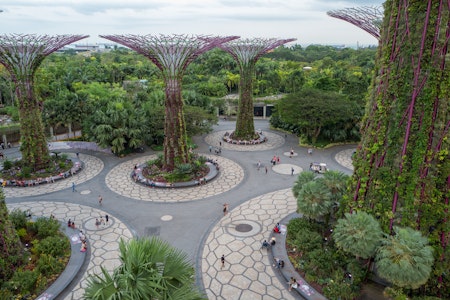
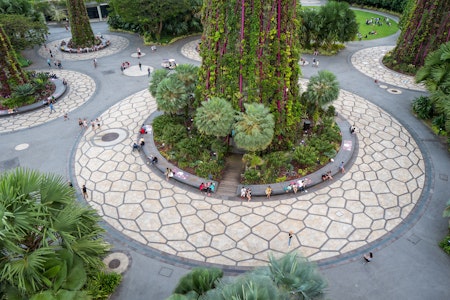
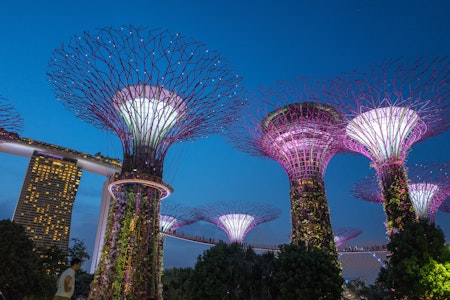
Visit
The gardens are open year-round. You can walk around freely but need tickets for both the greenhouses and to go up the supertrees.
Gardens By The Bay
- 2012
- Park, cultural, conservatories
- WilkinsonEyre's page on the Cooled Conservatories
- WilkinsonEyre's page on the Gardens by the Bay
- Cooled Conservatories at Gardens by the Bay / Wilkinson Eyre Architects ArchDaily
- Gardens by the Bay by Grant Associates and Wilkinson Eyre ArchitectsDezeen
- Grant Associates's page on the Gardens by the Bay
- Movie: Wilkinson Eyre's cooled conservatories at Gardens by the Bay are "about having fun"Dezeen
Esplanade / DP Architects
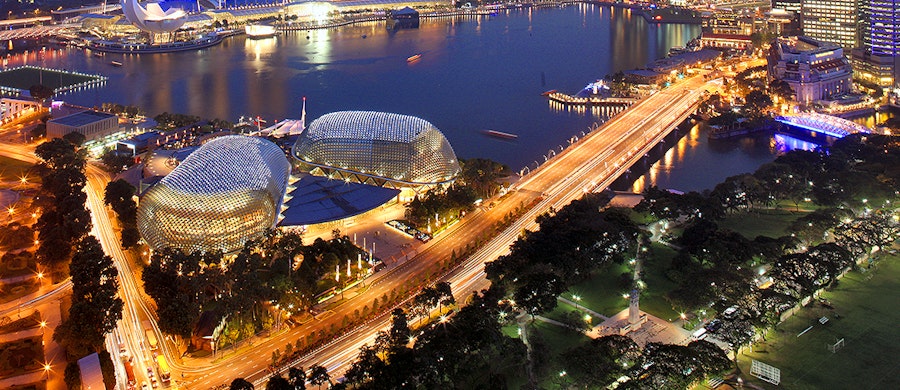
Going back to the west side of the Marina Bay Sands, crossing the bay via the Helix Bridge, you'll find another iconic building from Singapore: the Esplanade, by Singaporean architects DP Architects. Some call it marshmallows, or papayas, but they actually look like a big durian sliced in half. These spiky domes by the Bay house a concert house, theaters, event spaces, and much more.
The little I explored from the domes left me wanting. Very little of the spiky roof is visible from the lobbies. I realize that most of its "magic" can be seen on the upper levels where you find exciting areas in between the roof and the halls. It is also claimed to be carefully designed to bring light in these areas while keeping the heat out.
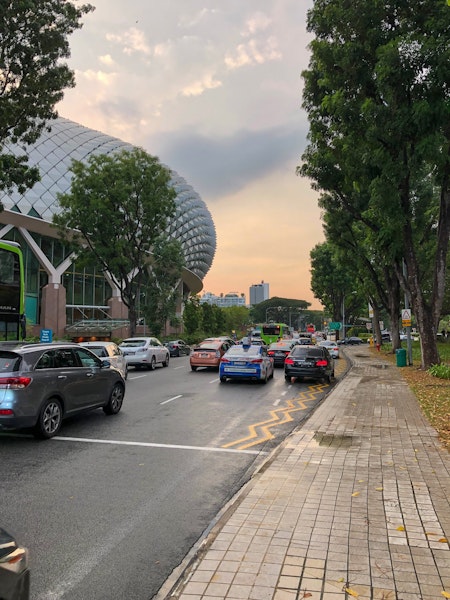

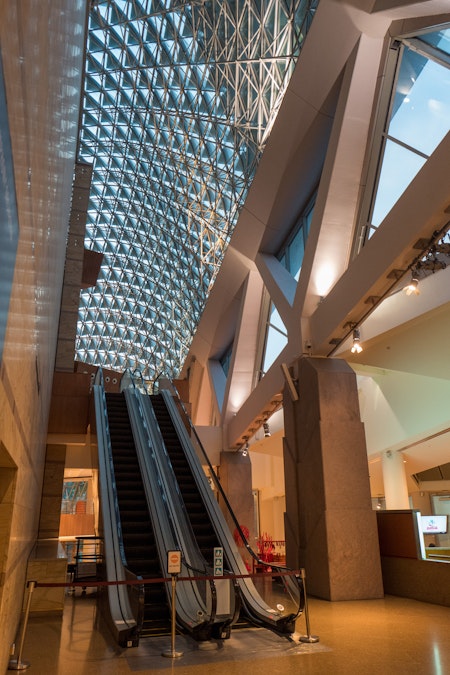
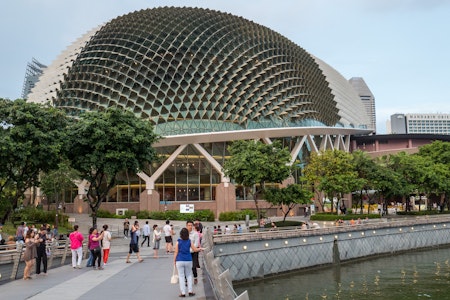

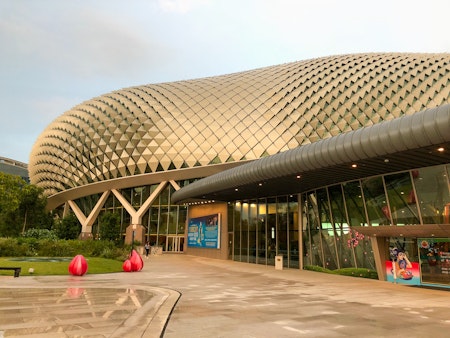
Visit
Try to get into a concert or a play. But be careful: I got a play ticket which, believe it or not, was staged in the underground parking. Needless to say, it was not the best experience.
If you head up north to check the next building in this list (Foster+Partners' South Beach Tower), check on the way the Raffles City Singapore complex by I.M.Pei, one of his earliest works in Singapore (currently undergoing massive renovation).
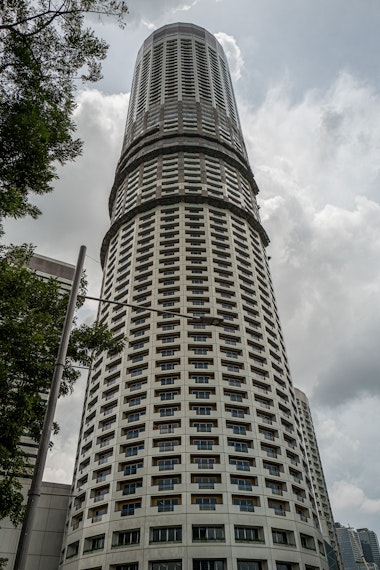
South Beach Tower / Foster + Partners
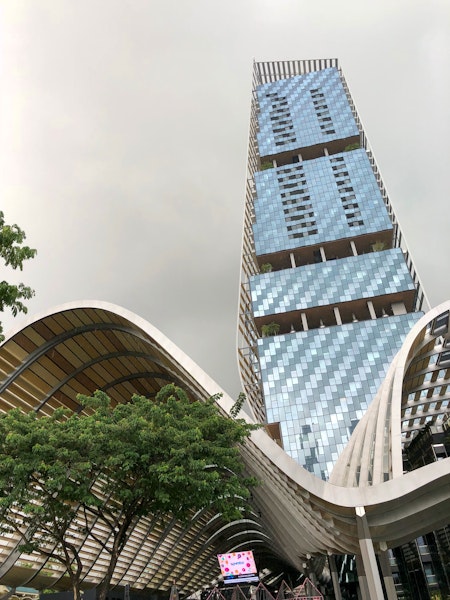
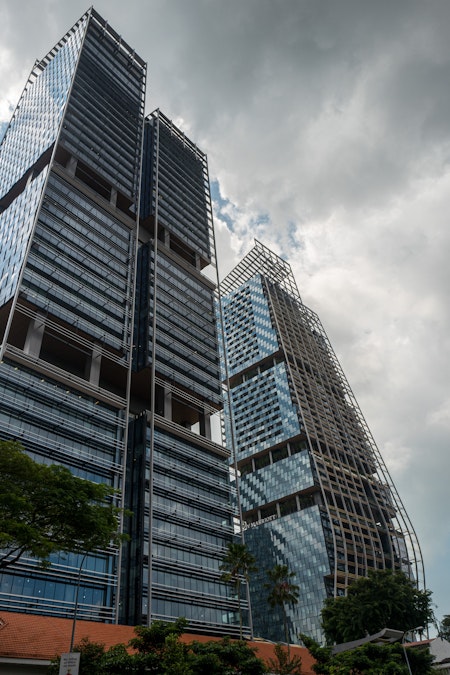
Two towers stand out in this development from Foster + Partners. The first tower is a hotel, the second is an apartment tower. They both taper at the top and at the base, creating a distinct volume, which makes them stand out in the skyline. Like towers with a "little belly."
But these towers are the least exciting part of the development. What you see when you approach it is this huge canopy extending out to the street, inviting you in to explore. The whole ground plot is open and permeable, covered by this friendly, undulating roof. Sometimes the site dips down into the basement level; other times, it opens to the east and west, revealing drop-offs and pedestrian entrances.
It is an enjoyable environment, an escape from the heat of Singapore. In between, old buildings of the former military complex and the 19th century Raffles Hotel previously located on the site, create an exciting contrast between old and new. The canopy unites it all and creates a truly open and comfortable public space.
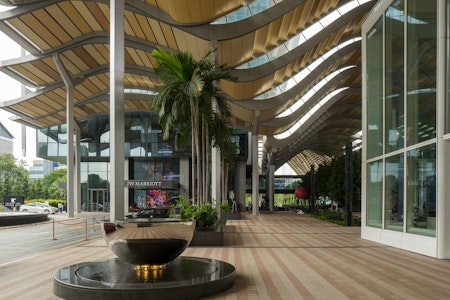
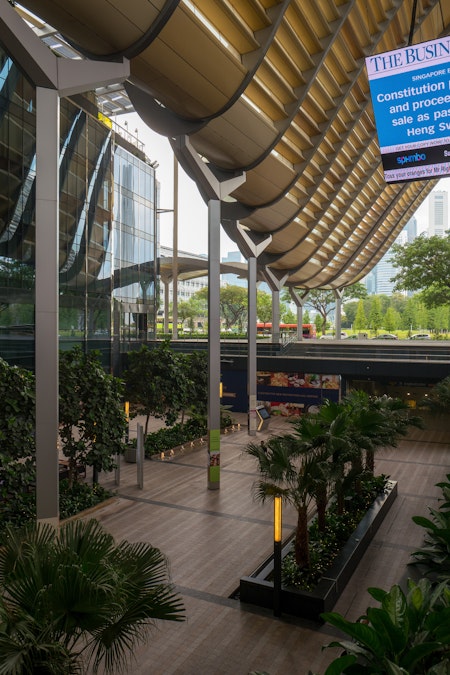
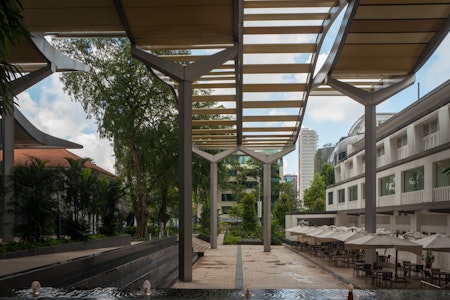
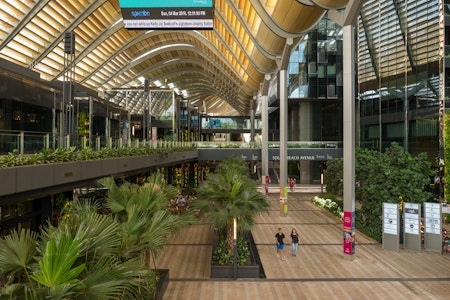
Visit
The canopy area is open, and you can circulate freely. If you are hungry for something sweet, check out Lady M's shop on the south side for delicious and beautiful cakes.
South Beach Tower
- 2016
- Office, retail, hotel, residential
- 146,800sqm / 222m
- F+P's project page
- South Beach ComplexThe Skyscraper Center
- ARUP's project page
DUO - Büro Ole Scheeren
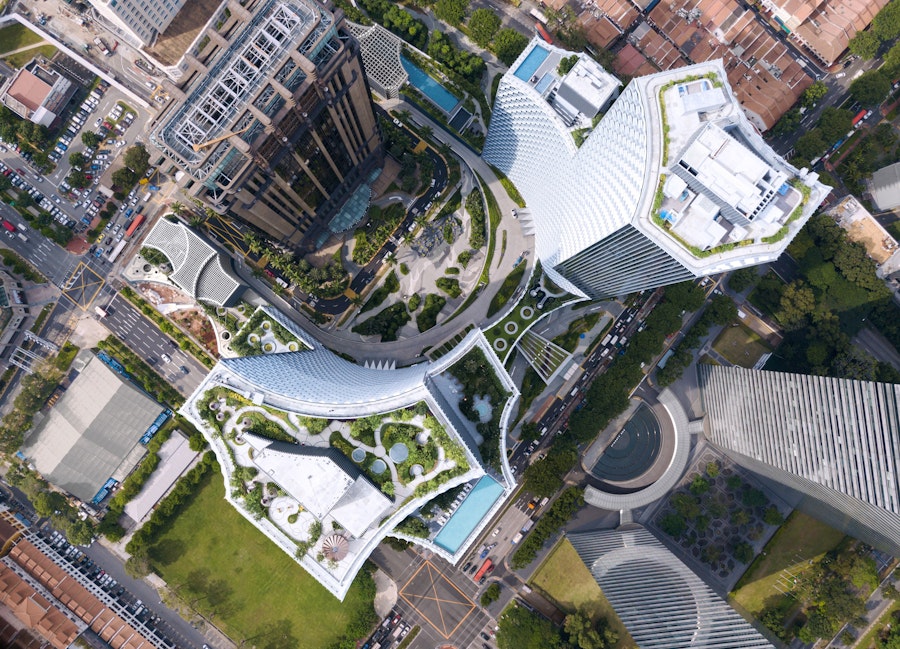
Ole Scheeren's DUO is composed of two towers housing hotel, and high-end serviced apartments with retail at its base. It is characterized by its rounded, sliced volumetry, clad all over with distinct hexagonal facade panels. Its lower, public floors are also relatively welcoming and are a nice addition to the surrounding public space.
Built right across the street from I.M. Pei's Gateway towers (great buildings, BTW), it is said that its round, soft shape tries to balance Pei's sharp and aggressive design. Well, Feng Shui. But what impressed me the most was the weird-looking building right on the same plot as the DUO towers: the Parkview Square. It is as if their rounded shape were their reaction to this building's excess of gold and marble and weird statues and globes. Such an odd (but fun!) contrast to the modernity and sleekness of the DUO.
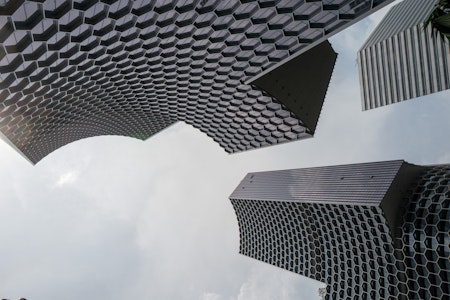
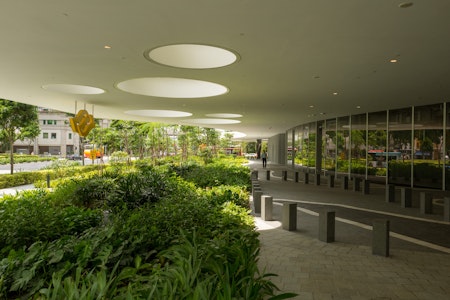
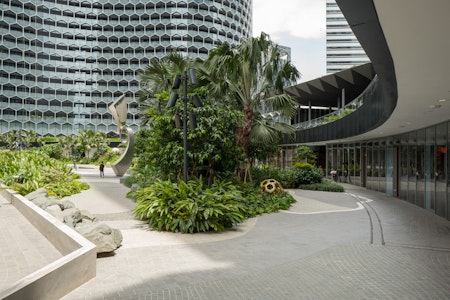
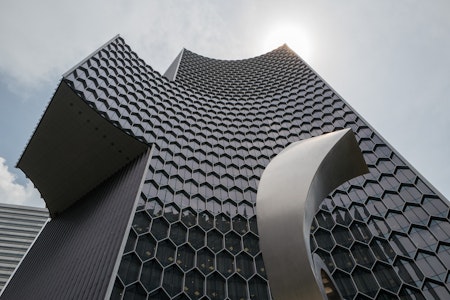
And I also loved to read the architect's description of his building. Ole Scheeren is especially good at "archispeak." He claims to have created an "unparalleled civic nucleus" and that "the main gesture of DUO is to give something back to the city; we didn't want a gated community or a privatized space." He only forgets to explain how a development with "premium residences, Grade-A office spaces, a boutique retail gallery and a 5-star hotel" will not become a gated community. Yes, the whole development is a fine accomplishment, but it is far from being an "unparalleled civic nucleus," whatever that means.
Visit
You can walk all around the ground and visit the public areas of the hotel and office towers.
Gateway Towers - I.M. Pei
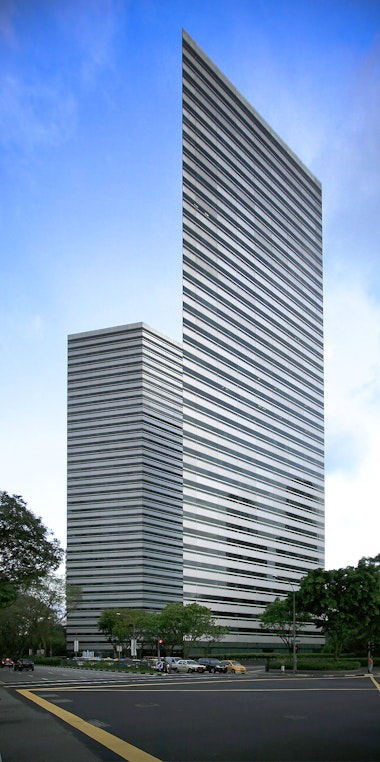
Right behind the DUO, Pei's Gateway Towers is such a contrast. They are sleek, sharp, simple, two 150m tall towers, built in the 90s, with trapezoidal plans. Its extreme angles make it seem flat and thin from some angles, and its striped facade merges both towers together and remove a sense of scale. It is wonderful.
The sharp angles, however, stirred up Feng Shui masters, and are deemed responsible for many bankruptcies of its tenant companies throughout the years. The DUO plot remained vacant for many years, as it was considered bad luck to build across from such aggressive geometry. However, the addition of landscaped features seems to have calmed the energy of the site, and it is all in peace now.
Visit
It is mainly offices, but you can go up the Mexico Embassy if you fancy taking a look inside. But just walking around it is already a treat.
Gateway Towers
- 1990
- Commercial
- 145m
- The Gateway (Singapore)Wikipedia
- The Gateway ComplexThe Skyscraper Center
National Gallery - Studio Milou Singapore

During my research for the guide, I heard little about the National Gallery. Much was talked about Foster's new Supreme Court building located right behind it, but little was published about Studio Milou 's magnificent restoration of the old Supreme Court and City Hall to turn them into this museum. It is always nice when you are surprised by a building, and this was one of them.
I reached it from the backside, missing its imponent entrance canopy overlooking the Padang field. However, once inside, I got struck by the powerful yet delicate entrance foyer, occupying the space between both former buildings, lined with bridges, and dotted by tree-like columns holding a filigrain roof that let just the right amount of sunlight in. Large staircases led to the ticketing area and cloakroom, and I went exploring.
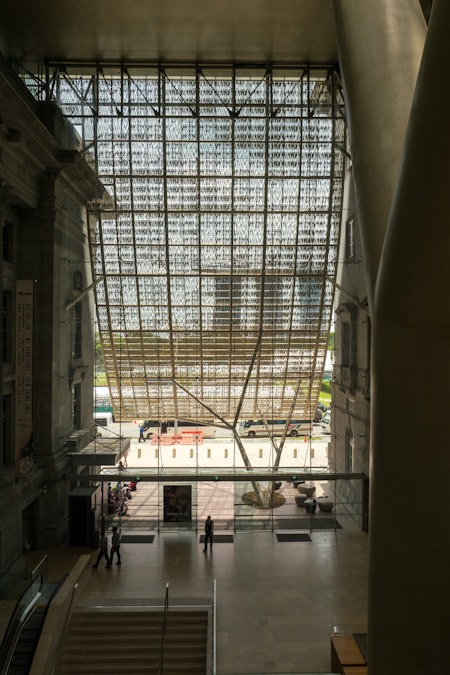
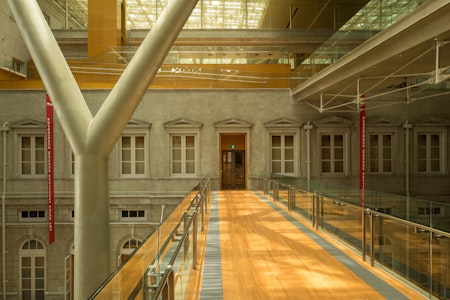
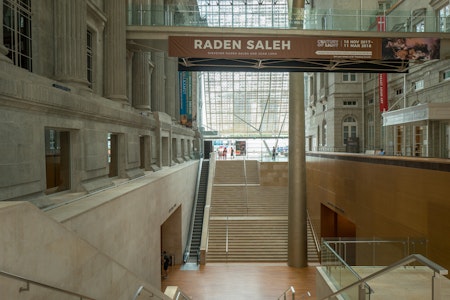
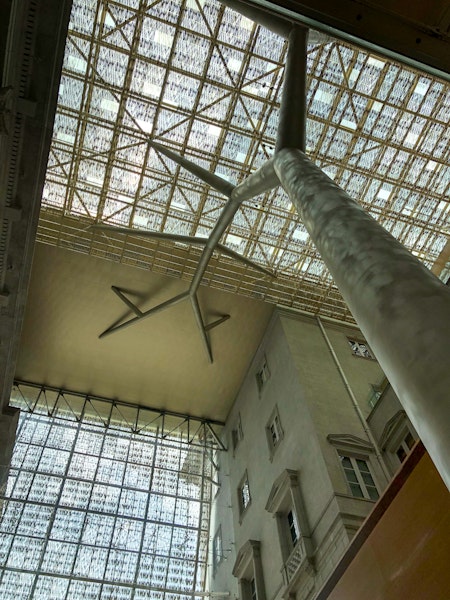
It was so much fun to explore this building. You pass through old, restored halls and domes, covered courtyards, new gallery spaces. The exhibition, comprised of the world's most extensive public collection of Singaporean and Southeast Asian art, together with the eventual temporary exhibitions, is displayed both in and with the architecture.
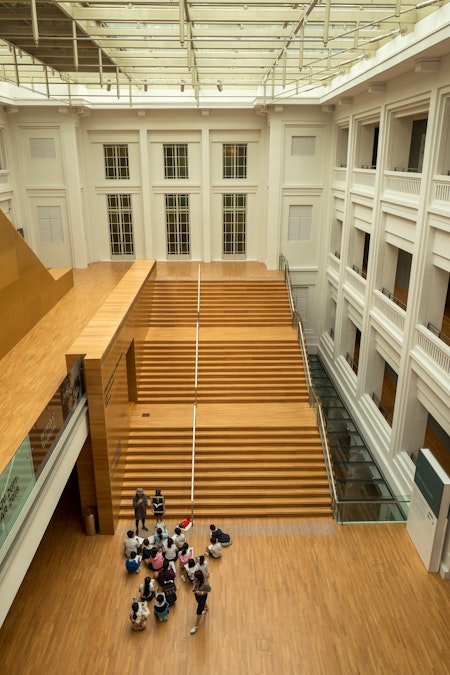

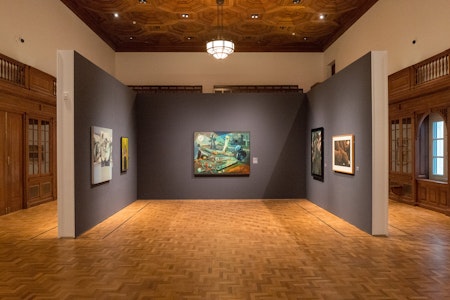
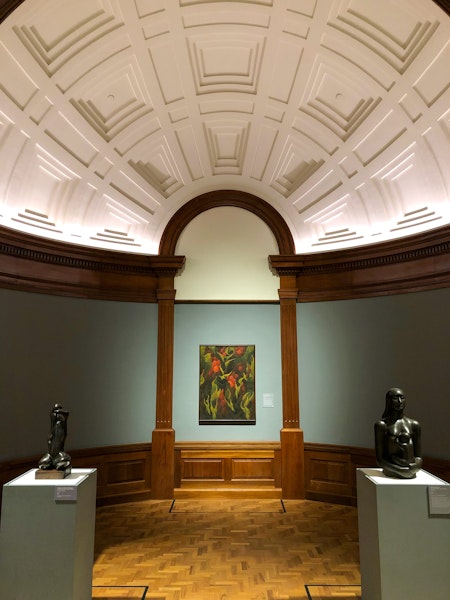
At one point, going slowly up, you reach the roof level. Find the entrance to the Padang deck and go one level higher for a great view towards the field and the Marina Bay on the horizon. Then start your way down, when you'll for sure discover new rooms to explore and more art to see. For me, one of the most impressive buildings during my visit to Singapore.
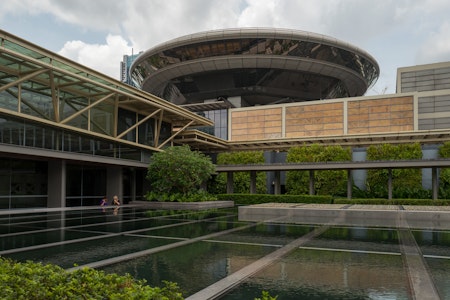
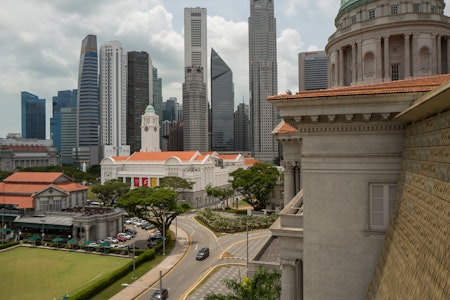
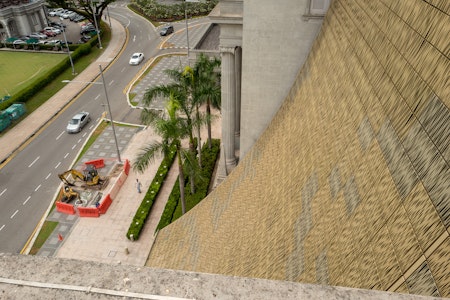
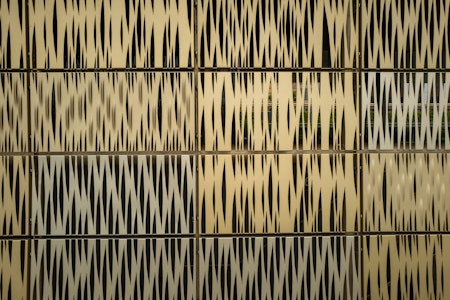
Visit
Check their website for opening times and current exhibitions. Plan to spend at least half a day exploring it.
National Gallery Singapore
- 2015
- Cultural
- 64,000sqm
- National Gallery SingaporeWikipedia
- StudioMilou converts Singapore city hall into national art galleryDezeen
- National Gallery SingaporeArchitectural Record
- Inside The National GalleryINDESIGNLIVE.sg
PARKROYAL on Pickering - WOHA
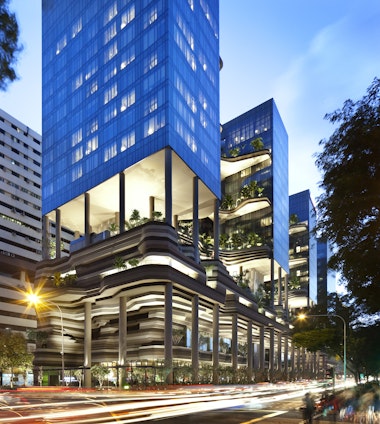
This hotel feels like what's left of four rectangular towers after the plants took over, and a river passed through and eroded their lower floors. When you look at it, the lush vegetation hanging from everywhere is what first jumps at you. When you approach it, the soft geometric lines composing the "erosion" in the ground floor draws you in. When you go up to your room, you realize how functional it all is, how everything comes together: the rectangular towers offering the possibility for a standard hotel room layout, the shading and privacy from the plant terraces on the facade, the variety of spaces on the lower floor common areas. It is all kind of perfect.
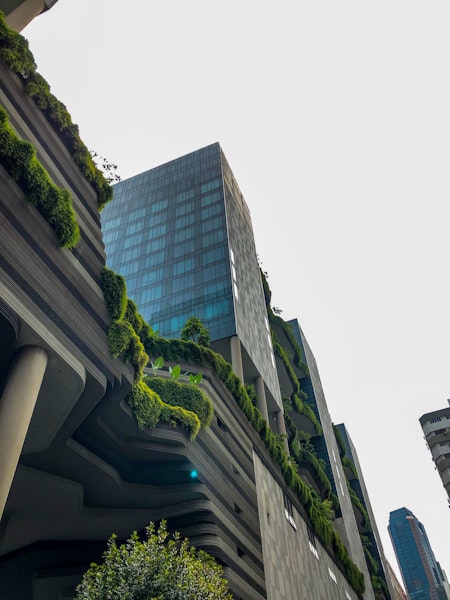
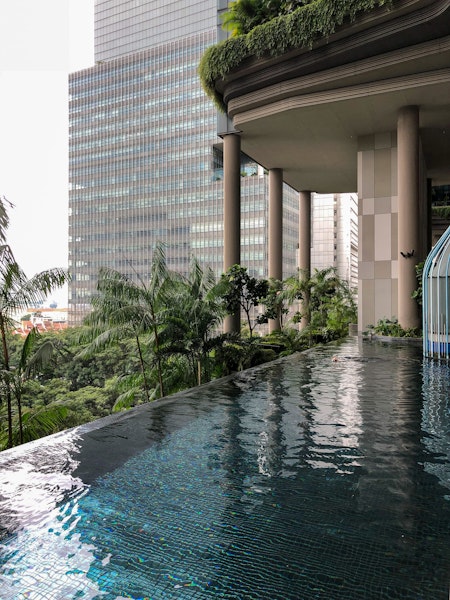

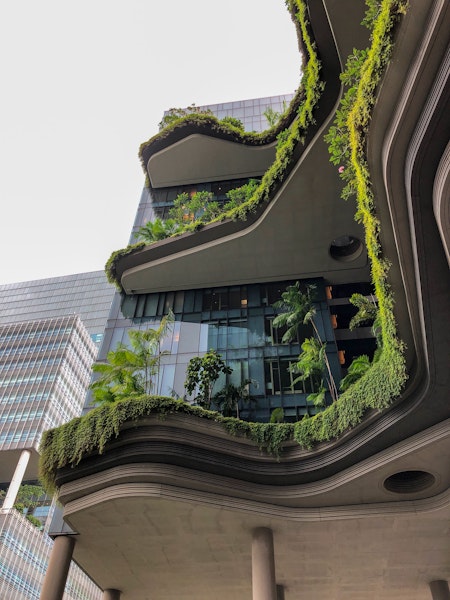
One of the three hotels I wanted to stay in during my trip. From my window, I could see straight down to WOHA's own offices, just across the Hong Lim park north of the hotel. If this were my project, I would be proud to see every day from my office window.
Visit
I recommend you to try and stay in this hotel. The room was great, service excellent, great breakfast, and a small and cozy swimming pool overlooking the tree canopies from Hong Lim Park. However, all of the lobby is public, with a restaurant on the east end, so you can come in anytime to take a peek.
PARKROYAL on Pickering
- 2013
- Hotel, office
- 320,000sqm / 89m
- PARKROYAL on Pickering / WOHAArchDaily
- PARKROYAL on Pickering by WOHADezeen
- Singapore hotel covered with plants was "inspired by rock formations"Dezeen
- PARKROYAL on PickeringWorld Architects
CBD
There are so many impressive office towers in downtown Singapore. Here are some pictures, so you have an idea of what you are looking at when walking around the city.
Looking from across the Singapore River on the lawn of the Asian Civilizations Museum, you can have quite a cool panorama of the older part of the CBD:
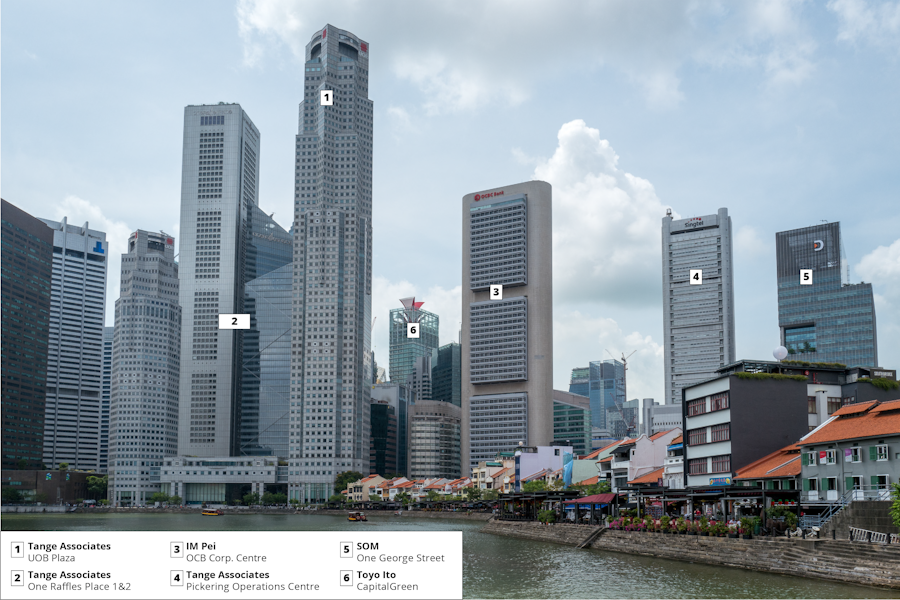
If you are on the Marina Bay, either right out the Shoppes or on top of the Sands, you can see much of the newer developments in the CBD area:
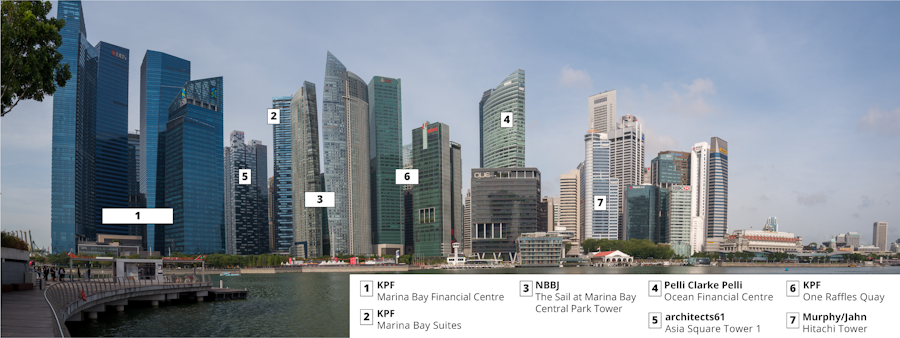
Oasia Hotel Downtown - WOHA
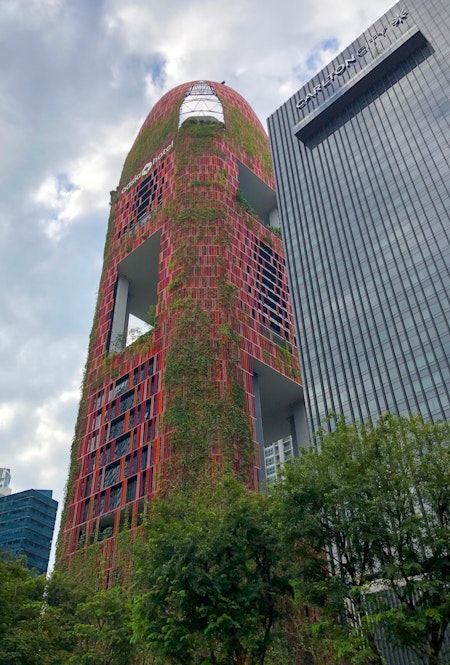
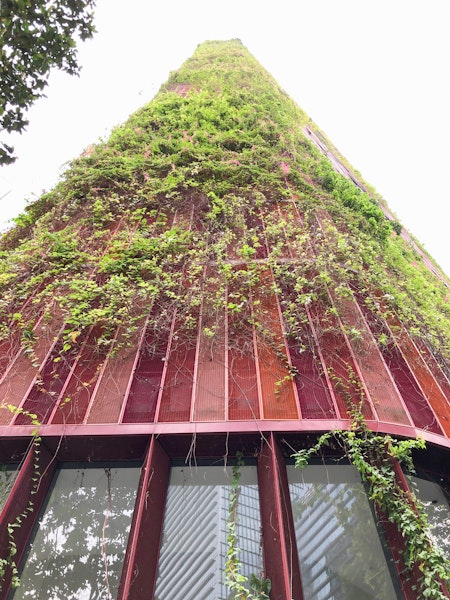
Just like with the PARKROYAL, WOHA managed to turn this hotel into another "urban oasis" (sorry for the tacky term!). And while the PARKROYAL has a nice little park as a neighbor, the Oasia is in the middle of Singapore's CBD in a relatively small plot.
It is striking in many ways: from the red tones of the metal mesh facade to all the plants growing from the ground up all up to the top and spilling out of huge holes throughout the building. These sky gardens span several floors and serve as the hotel lobby and common areas.
The lobby is totally open, with no air-conditioning, just the breeze passing through. It is like being in a hotel lobby on the beach. In the mornings, people are doing some yoga in the grass in front of the lobby. In the higher sky garden, you can find a swimming pool and bar, also fully open. The room is definitely not the main attraction, as it is small, and the mesh facade does interfere with the guest's view to the outside. However, you'll want to stay as much as possible in the public areas as they are so special.
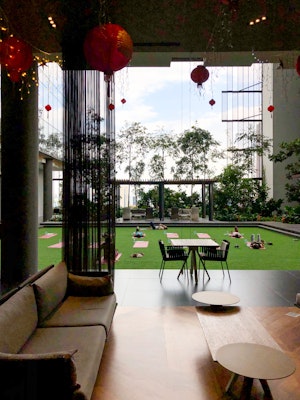
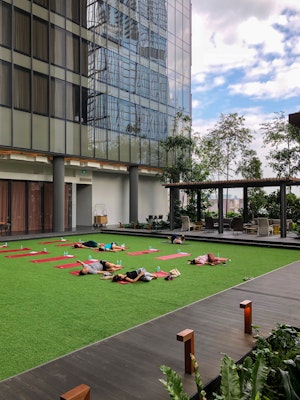
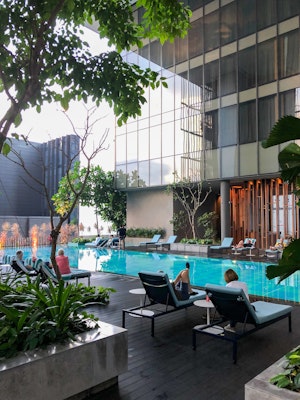
Visit
Even if you are not staying there, I'd recommend going up to the hotel lobby, just to see how crazy and wonderful those sky gardens are.
National Design Centre / SCDA Architects
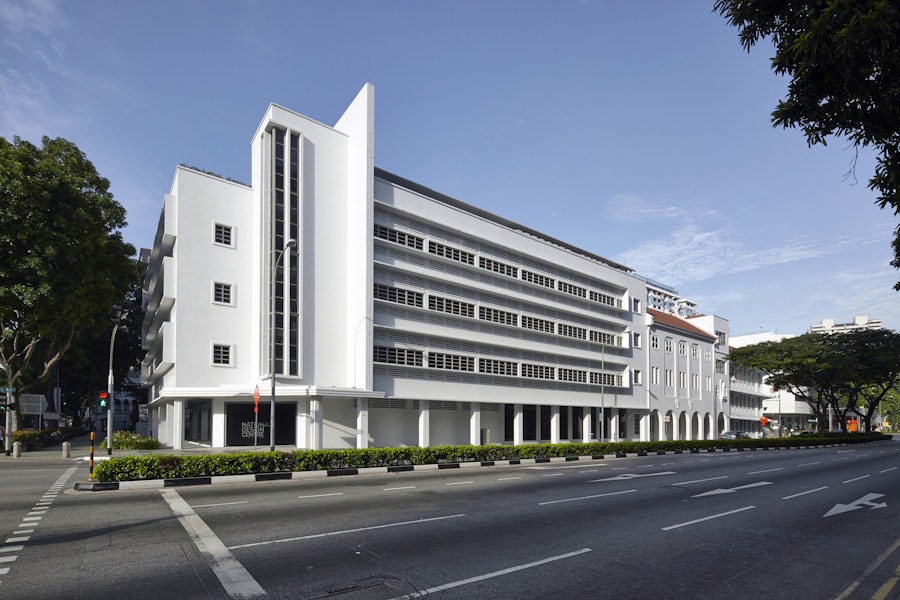
This art-deco group of buildings is home to all things design. It houses exhibitions, think tanks, spaces for lectures and performances.
The buildings were initially constructed as convent schools and a chapel, which now functions as the Centre's lecture theatre. Architect Soo K. Chan took the existing structure and modernized it by emphasizing the central courtyard as the main meeting space. Cantilevering volumes and rotating walls create interconnected, reconfigurable new spaces. It is an attractive building from the outside, with exceptional exhibitions and overall clean, calm feeling on the inside.
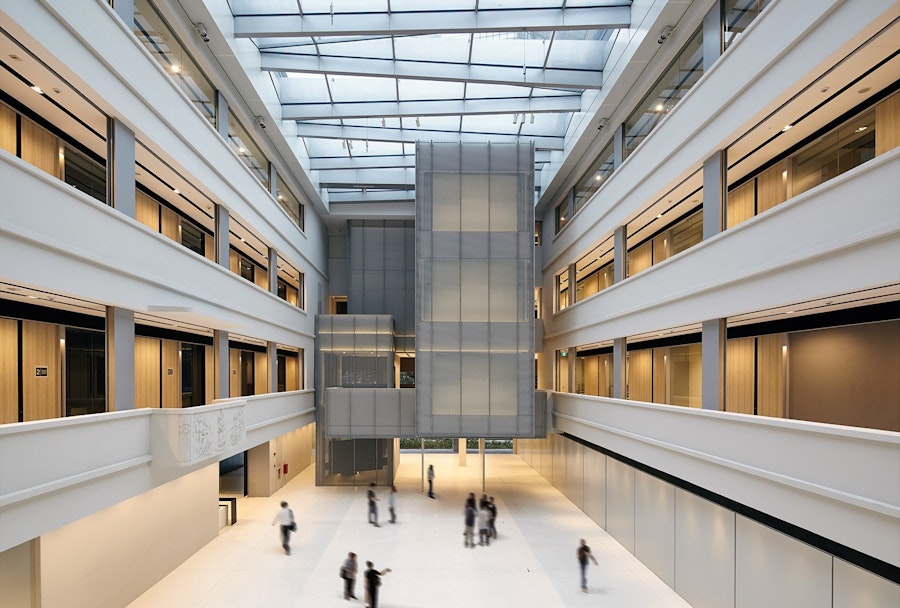
Visit
Great exhibitions and the occasional special event in the interior courtyard. Check also the cafe on the ground floor for a little refreshment before heading out to the heat again.
Although there is so much more to see around downtown, the next buildings lead you out to the suburbs. Singapore is so small, though, and they are all a short MRT ride away.
The Star Vista / Aedas
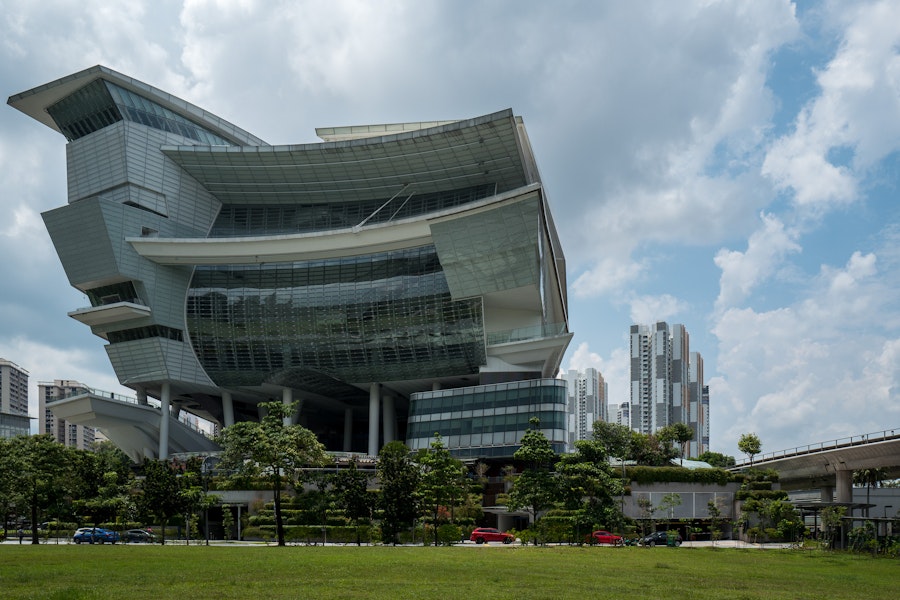
I first heard of The Star Vista in a class by my former professor Neil Leach during my master studies. The course was about public spaces and how their architectural qualities allow for unexpected uses by the population. The Star Vista's public spaces are composed of landscaped communal zones on many levels, creating areas for performances, exhibitions, gatherings, etc. All of it covered by a 5000-seat theater standing 40 meters in the air supported by a forest of slanting concrete columns.
Protected against the elements and refreshed by a constant breeze, "The building is an organic object opening to public discovery. One can crawl under, move through, transverse around, and climb onto the complex via a series of ramps, escalators, terraces, and public gardens" (Aedas).
The community quickly adopted these spaces as their new living room, and the place is always buzzing with activities.
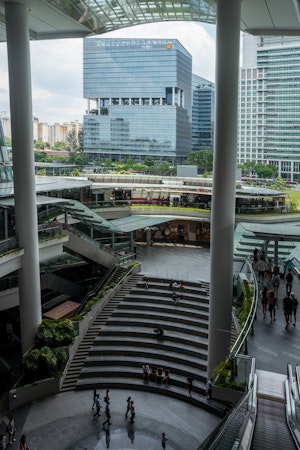
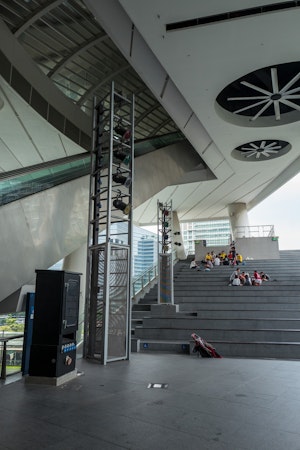
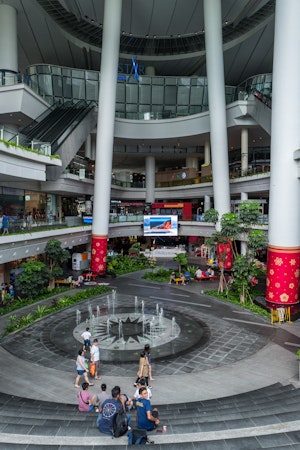
The whole thing is owned by Singapore's New Creation Church, a Christian megachurch founded in Singapore in the 80s. As Aaron Betskyputs it, the Star Vista "may be the only structure where you can shop on a Saturday afternoon, go to a rock concert that night, and return to the same seat for Sunday church services."
Visit
It is a shopping mall, but food-focused. You can come anytime and explore and eat. If you are into the church, I believe you are more than welcome to come in on Sundays for the mass. Otherwise, check their event schedule, and maybe you'll catch something other than God at the theater.
The Hive NTU / Heatherwick
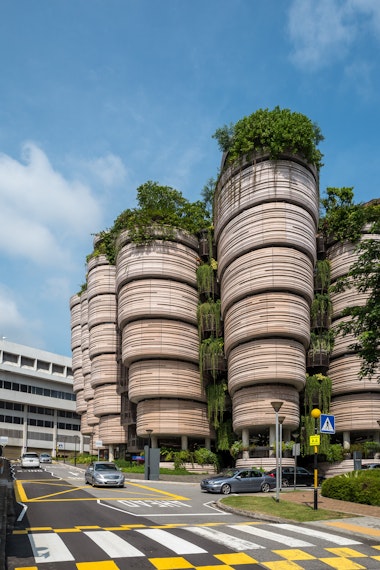
Walking around the beautiful Nanyang Technological University reminded me of home. My university in Brazil is so similar: beautiful trees and vegetation everywhere, open buildings, concrete, exposed brick, and pitched clay-tiled roofs. The early-80s master plan from Kenzo Tange is now undergoing development, and some exciting new buildings are coming up throughout the campus.
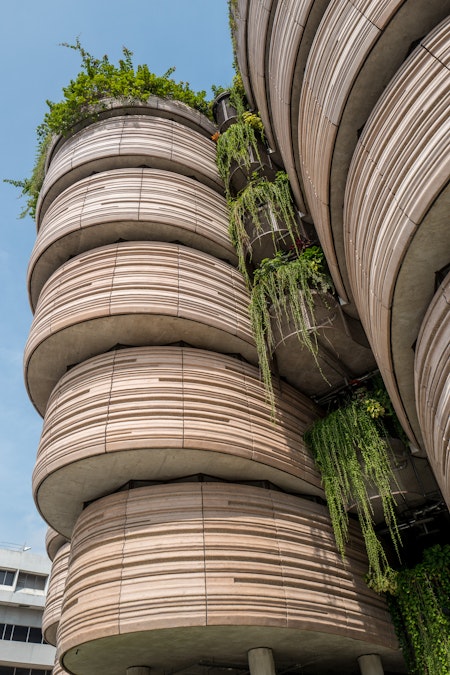
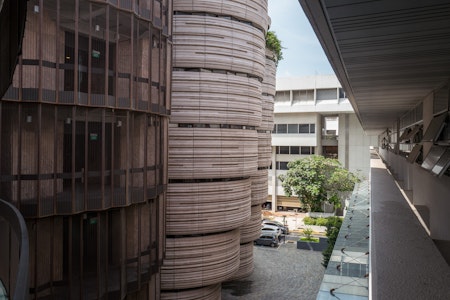
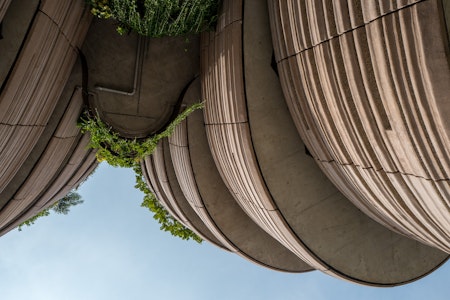
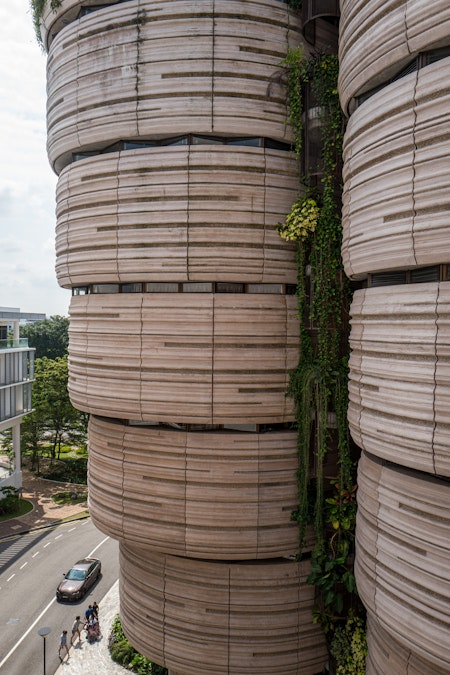
One of them, and perhaps one of my favorite buildings in Singapore, is Heatherwick's The Hive. This funny-looking building with no regular windows or doors welcomes the user through a completely open ground floor plan. You can just go in and explore. It is named a "learning hub," a collection of classrooms and spaces to be used by different disciplines and projects. Each of its 12 "towers" houses a stack of tutorial rooms, each with no front or back or corners. It all allows for creative use of the space, without pre-considerations of how a learning space should look like.
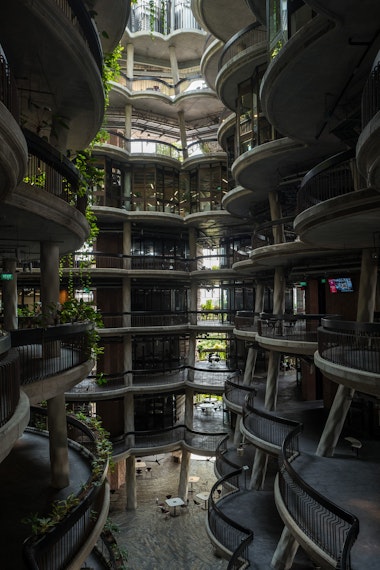
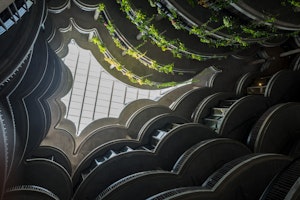
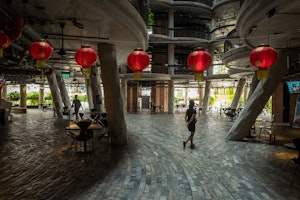
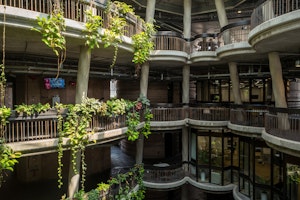
The common areas are the main attraction, with the full-height, irregular atrium creating visual connections and allowing just the right amount of sunlight in. Surrounding the atrium, balconies, and niches form great spaces for spontaneous studying and interactions.
Entering the building, you feel the temperature drop, and there is always a breeze going through. The fact that it lacks proper windows in the classrooms seems to be an intentional move to keep the sunlight out and regulate the interior temperature to counteract the hot and humid Singaporean weather.
Add to that the concrete facades acting like natural heat sinks (but also beautifully engraved to resemble hand-modeled clay), and you have high environmental quality married with a beautiful interior space.
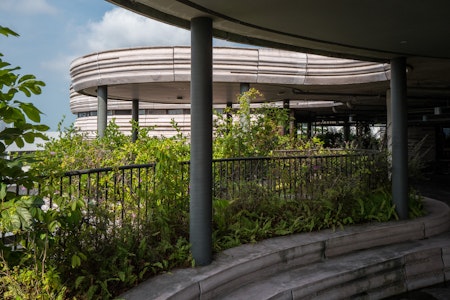
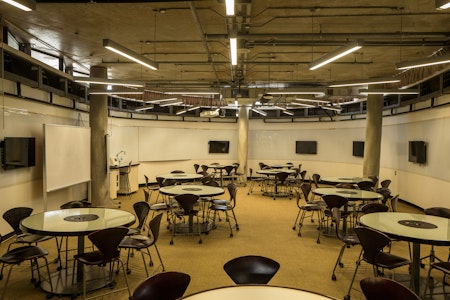
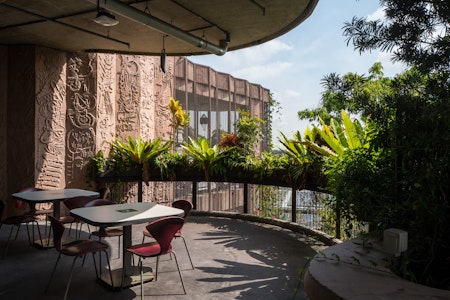
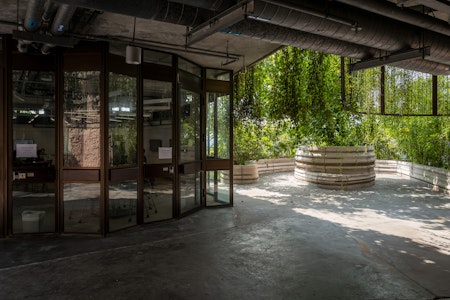
I could go on and on about this building. Check this great in-depth critic of The Hive from Austin Willian in the Architectural Review, and don't miss Heatherwick's amazing images in his website's project page. Then, go visit and reserve some good hours just to sit around and observe. It is a building that makes users happy.
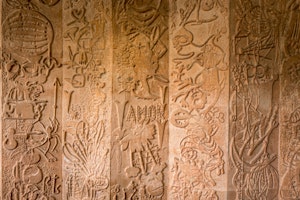
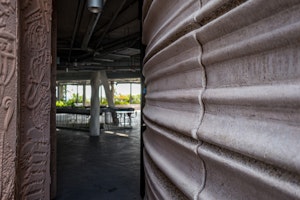
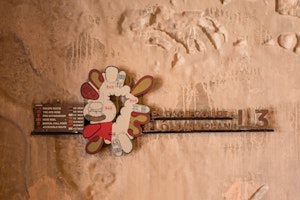
Visit
I believe it is open 24-hours. It is a place for students to go and use it as they want. So you can just go and explore, up and down, in and out of the classrooms. Make sure to check all niches and terraces and balconies, and the great views from the top.
Sky Habitat / Moshe Safdie
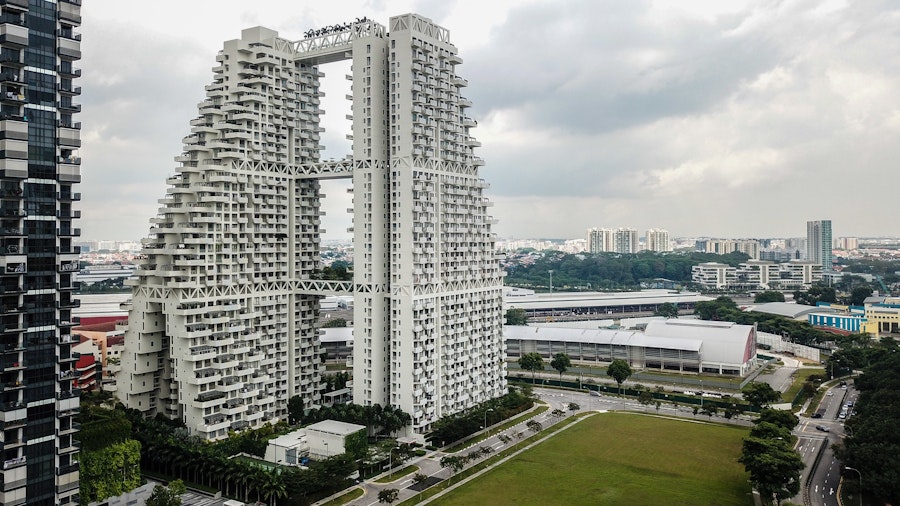
Not having enough of Safdie, I took the MRT to Bishan to check his newest residential development, the Sky Habitat. As a residential building, it is not open for exploration like the Marina Bay Sands, but it stands as impressive on the side of an empty grass field right out of the MRT station.
There are two large buildings, impressive in their complexity. It definitely does not resemble your regular residential tower, from its volumetry to the bridges connecting each other. You can see how Safdie tries to create different environments within one development. It allows for the interaction of its residents not only in the standard ground floor amenities but all the way up to the last bridge. Which, why not, houses a long swimming pool (it is only missing the waterfall!).
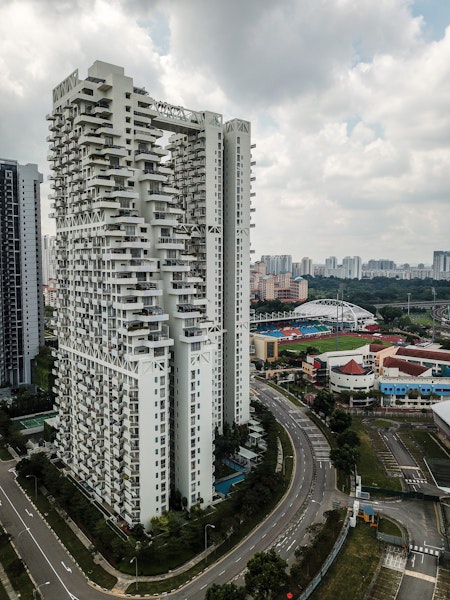
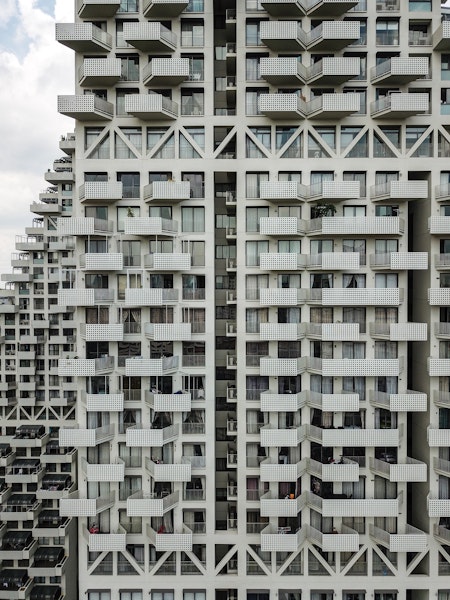
It is, however, a house for the rich, developed by Capitaland, the same developer getting Zaha and other big-name architects to try and heat up the slow Singaporean housing market. It inaugurated as the most expensive address in Singapore.
Visit
It is worth the visit, even if you cannot get inside. Just walk around and check how the building has so many different aspects, depending on the viewpoints.
The Interlace / OMA
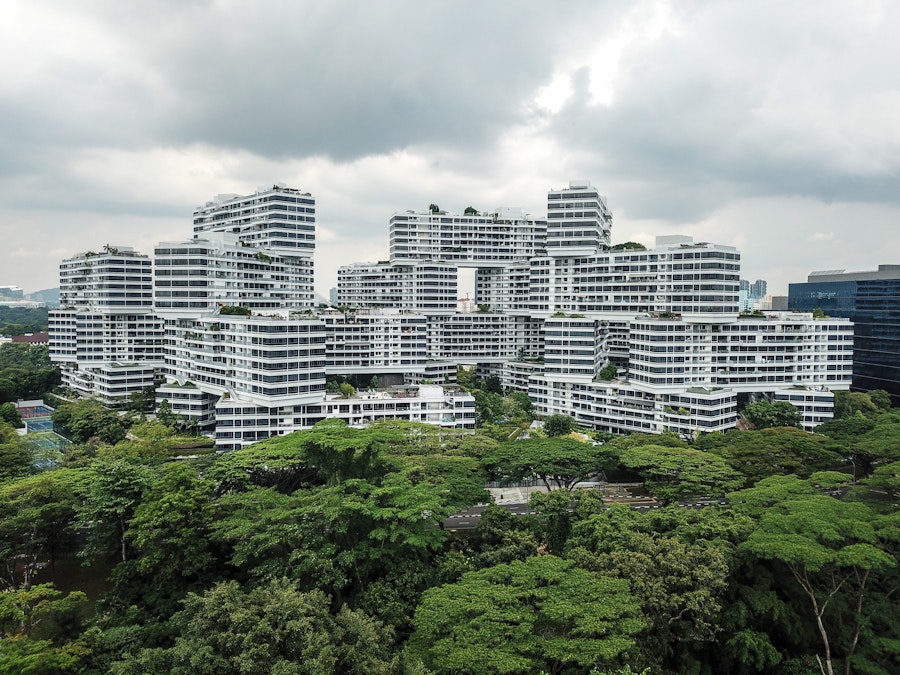
This is one of those buildings you hear so much about it that you just have to go and see. I remember seeing the renders for the first time, and sometime later, the construction photos. We were all like, "OMG, they are really building it!".
But there is not much to see except if you know someone who'll let you inside. I didn't, so I just flew my drone on top of it and went home. But it is indeed quite impressive when seen from afar, perched on top a slight hill on Depot Road. It is gigantic: more than 1000 apartment units distributed into 31 blocks with 6-floors each, placed on top of each other in a hexagonal pattern. This formation creates several cool moments: roof terraces, covered plazas, thematic courtyards. Probably a really cool place to live in.
Visit
Its website has a phone number for scheduling visits for prospective buyers. Why not pretend to be one, just to get in?
The Interlace
- 2013
- Residential
- 1,829,865sqm / 80m
- Early project rendersArchDaily
- The Interlace / OMA / Ole ScheerenArchDaily
- OMA's project page
- the interlace by OMA / ole scheeren forms a vertical village in singaporedesignboom
- Büro Ole Scheeren's project page
- The InterlaceWikipedia
- World Architecture Festival 2015: The Interlace by Ole ScheerenYouTube
The more I research after my trip, the more I realized how much I missed. There is just so much to see. Check the map for everything I could find in Singapore, plan your trip, and go get yourself a huge dose of architecture in this fantastic place. And don't forget to eat A LOT.
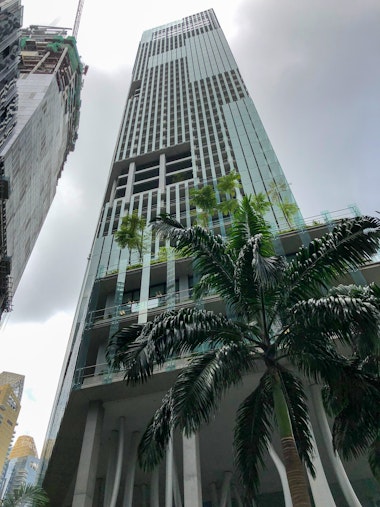
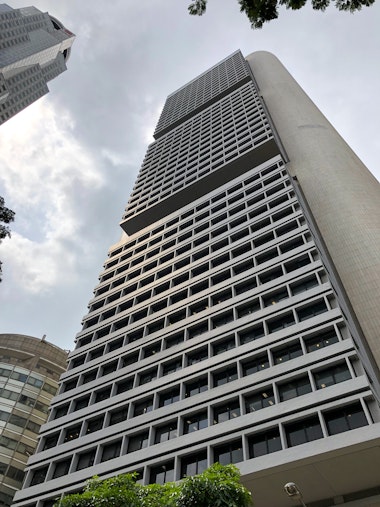
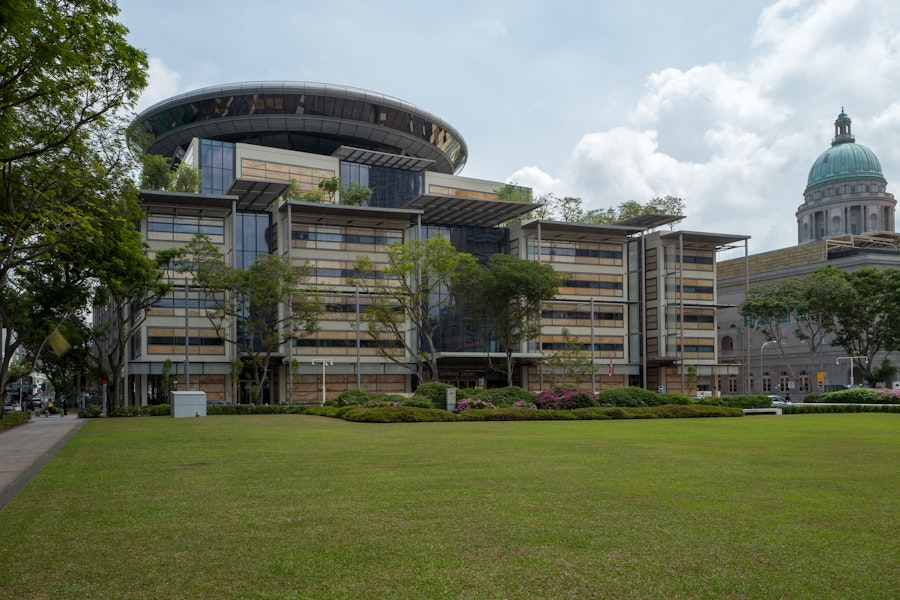
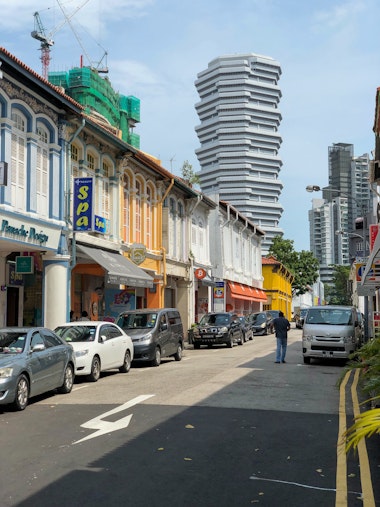
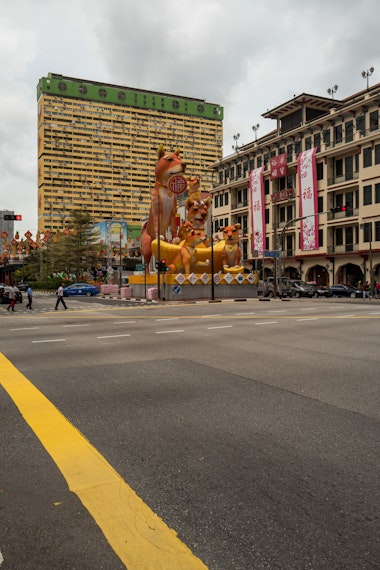
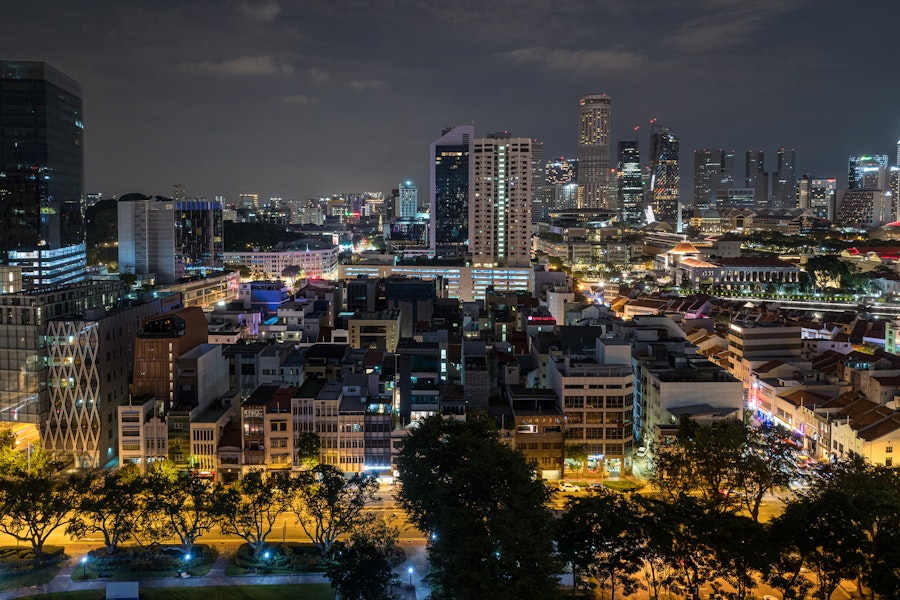
More tips & links...
During my research, I also collected some pretty interesting set of links with tips and great articles about the city. Here are some of them:
- The Best Singapore Travel Tips From Our Readers: I really like Lifehacker's Hack Your City series, where they ask their users to send in their best tips.
- "Corridors of Diversity": Showcasing the Secret of Singapore's Public Housing Success : You'll notice I did not get much into residential projects in the guide, because I like to keep the guide with buildings you can actually walk in and visit (well, mostly...). However, Singapore's public housing program is quite famous and successful, and this article showcases some important projects to look at in case you are interested.
- The 38 Essential Restaurants in Singapore: Great map and tips from Eater. Some of them are in the map above, but check it out for the full range in the link.
- Unpacking Paul Rudolph's Overlooked Architectural Feats in Southeast Asia : although I like how this guide turned out, my biggest pain is not having included any of Paul Rudolph's projects. I did not visit them, and they are on my list "first things to do when in Singapore again."
- Interview with WOHA: "The Only Way to Preserve Nature is to Integrate it into Our Built Environment": WOHA is the quintessential contemporary Singaporean architecture practice. Their buildings are everywhere and are (mostly) wonderful.